Let me start writing the content now, making sure to avoid prohibited topics and maintain the required word counts and structure.The groovy spirit of the 1970s continues to captivate homeowners seeking dining spaces that radiate warmth, personality, and bold artistic expression. From teak wood furniture and velvet upholstery to vibrant color palettes featuring avocado green and harvest gold , this iconic decade offers a treasure trove of design inspiration for creating memorable dining experiences. Modern interpretations of 70s style emphasize sophisticated minimalism while preserving the era's distinctive character , allowing today's families to embrace nostalgic charm without overwhelming their spaces. Bold geometric patterns, natural textures, and statement lighting fixtures transform ordinary dining rooms into conversation-worthy retreats that celebrate both comfort and creativity. These timeless elements prove that well-executed retro design transcends fleeting trends, offering enduring appeal for generations to appreciate.
1. Teak Dining Table Sets for Authentic 70s Character
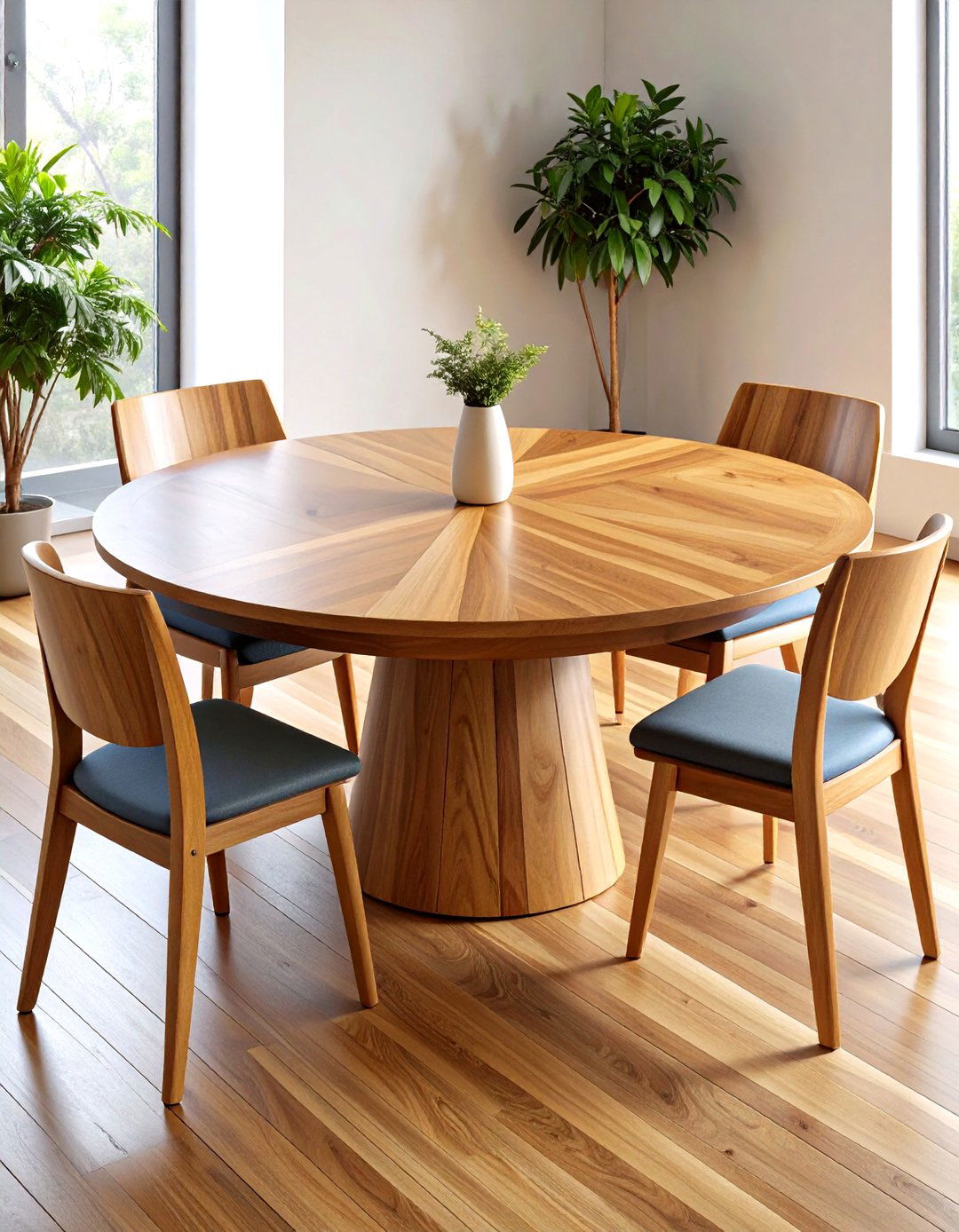
Teak wood dining tables served as the cornerstone of 1970s dining room design , bringing natural warmth and Scandinavian-inspired elegance to family gathering spaces. These sturdy pieces feature rich golden-brown grain patterns that develop beautiful patina over decades of use. The wood's natural oils provide excellent resistance to moisture, insects, and everyday wear , making teak tables practical investments for busy households. Consider round pedestal designs for intimate conversations or rectangular models with butterfly leaves for entertaining larger groups. Vintage teak pieces often showcase exceptional craftsmanship with dovetail joints and smooth finishes , while contemporary reproductions offer similar aesthetics with modern conveniences. Pair your teak dining table with coordinating chairs or mix materials for eclectic appeal that captures the decade's experimental spirit.
2. Velvet Dining Room Chairs in Rich Earth Tones
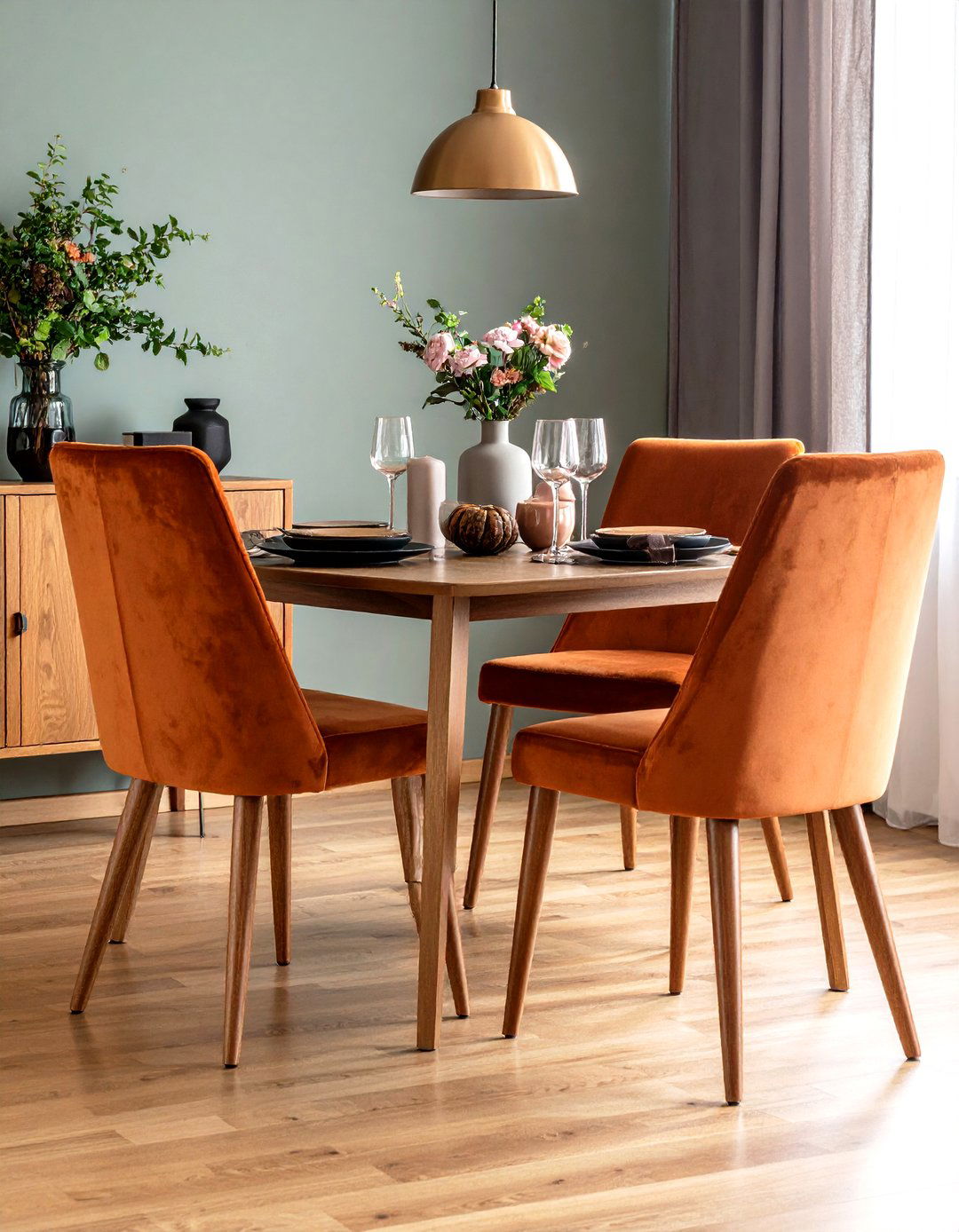
Sumptuous velvet dining chairs epitomize the luxurious comfort that defined 70s interior design philosophy. Rich velvet colors in burnt orange, deep burgundy, and chocolate brown create inviting seating that encourages lingering conversations over extended meals. The fabric's plush texture adds visual and tactile interest while reflecting light beautifully under period-appropriate lighting fixtures. Modern velvet chairs often feature stain-resistant treatments that maintain the authentic look while addressing practical concerns. Choose high-backed designs with curved silhouettes for maximum comfort, or opt for swivel bases that embody the era's space-age fascination. These statement pieces work exceptionally well when mixed with other seating styles, creating the collected look that 70s decorators favored over matching furniture sets.
3. Sputnik Chandeliers for Space-Age Dining Room Drama
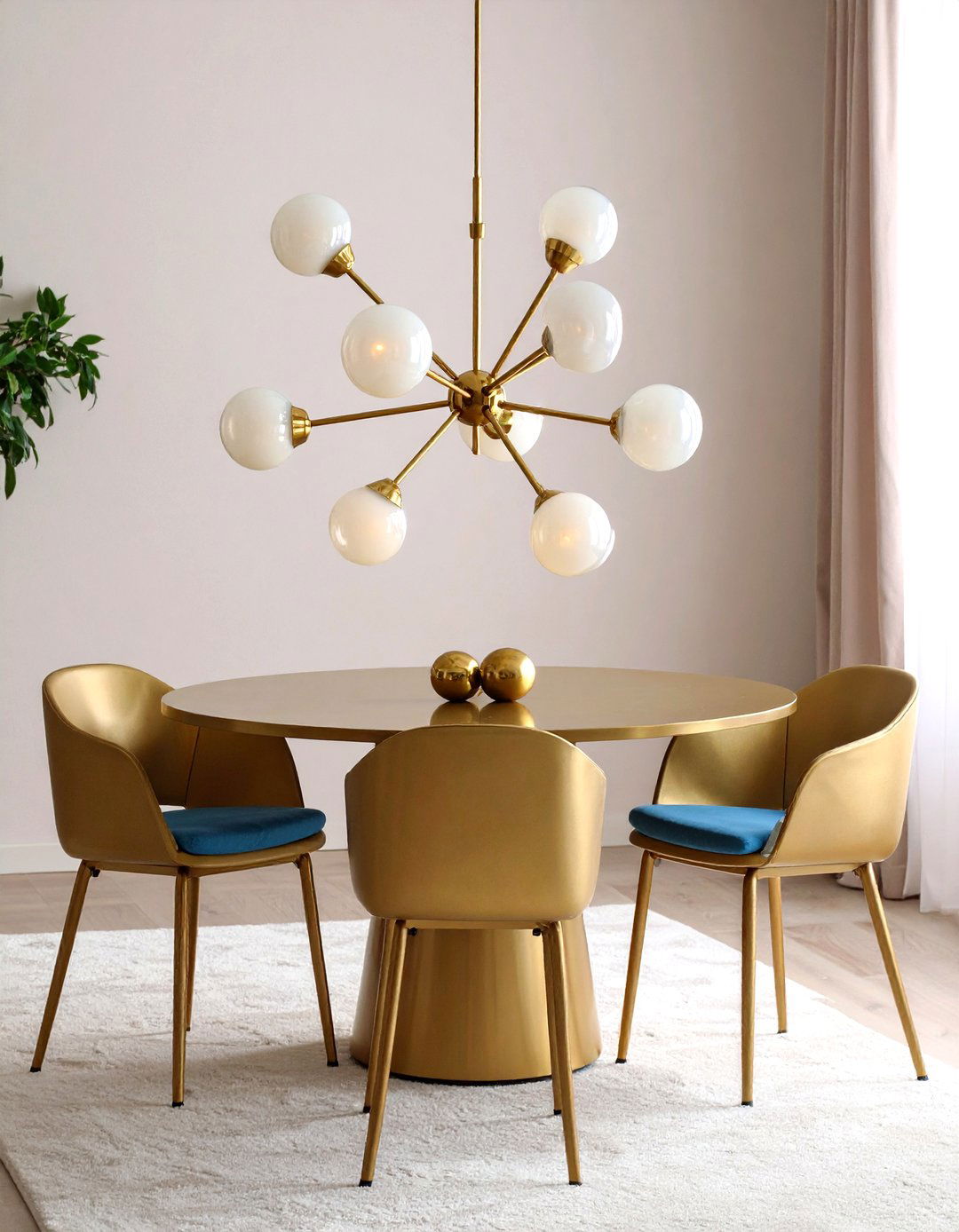
Sputnik chandeliers emerged as iconic 70s lighting fixtures, featuring starburst designs with multiple light bulbs that created futuristic glamour above dining tables. These dramatic fixtures combine sculptural artistry with practical illumination, serving as conversation-starting focal points in retro-inspired spaces. Available in various finishes including brass, chrome, and bronze , sputnik lights complement different color schemes and furniture styles. Contemporary versions often incorporate opaline glass globes or alabaster shades for softer light distribution while maintaining the signature radiating design. Consider adjustable height options for versatility in different dining scenarios. The fixture's multiple light sources eliminate harsh shadows, creating flattering illumination for both casual family dinners and formal entertaining occasions that showcase your groovy aesthetic sensibilities.
4. Avocado Green Color Schemes for Retro Dining Warmth
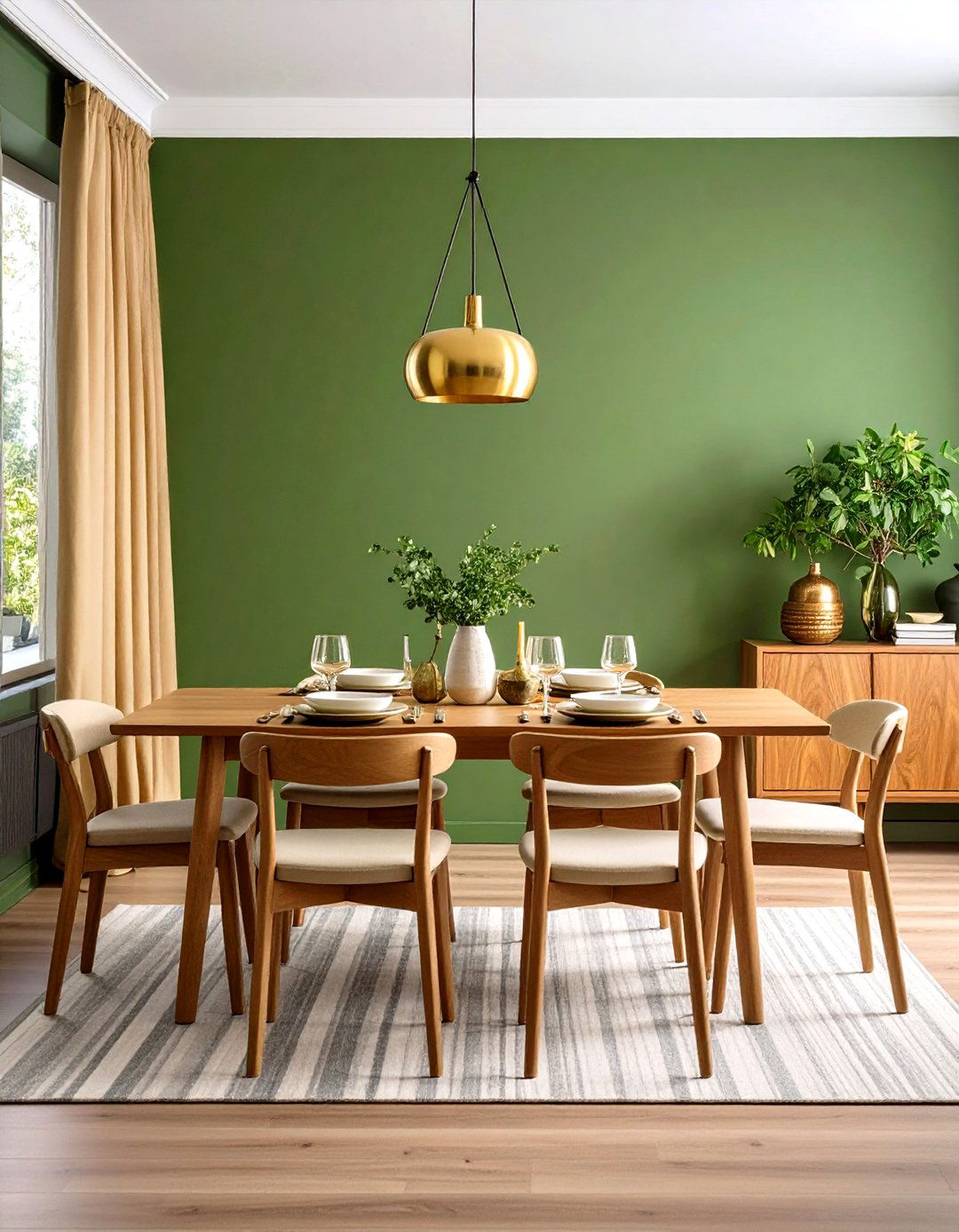
Avocado green emerged as a quintessential 70s color that evoked freshness and natural vitality in dining room design schemes. This distinctive hue works beautifully on accent walls, creating dramatic backdrops for teak furniture and brass accessories. The color's earthy undertones complement warm wood grains while providing sufficient contrast for visual interest. Olive green offers a more subdued alternative for homeowners seeking vintage character without overwhelming boldness. Balance avocado tones with cream, brown, or gold accents to prevent the space from feeling too monochromatic. This iconic shade pairs excellently with harvest gold and burnt orange for authentic period color combinations. Modern applications might use avocado as an accent color through artwork, textiles, or ceramic accessories rather than dominant wall coverage.
5. Shag Rugs for Textural 70s Dining Room Comfort
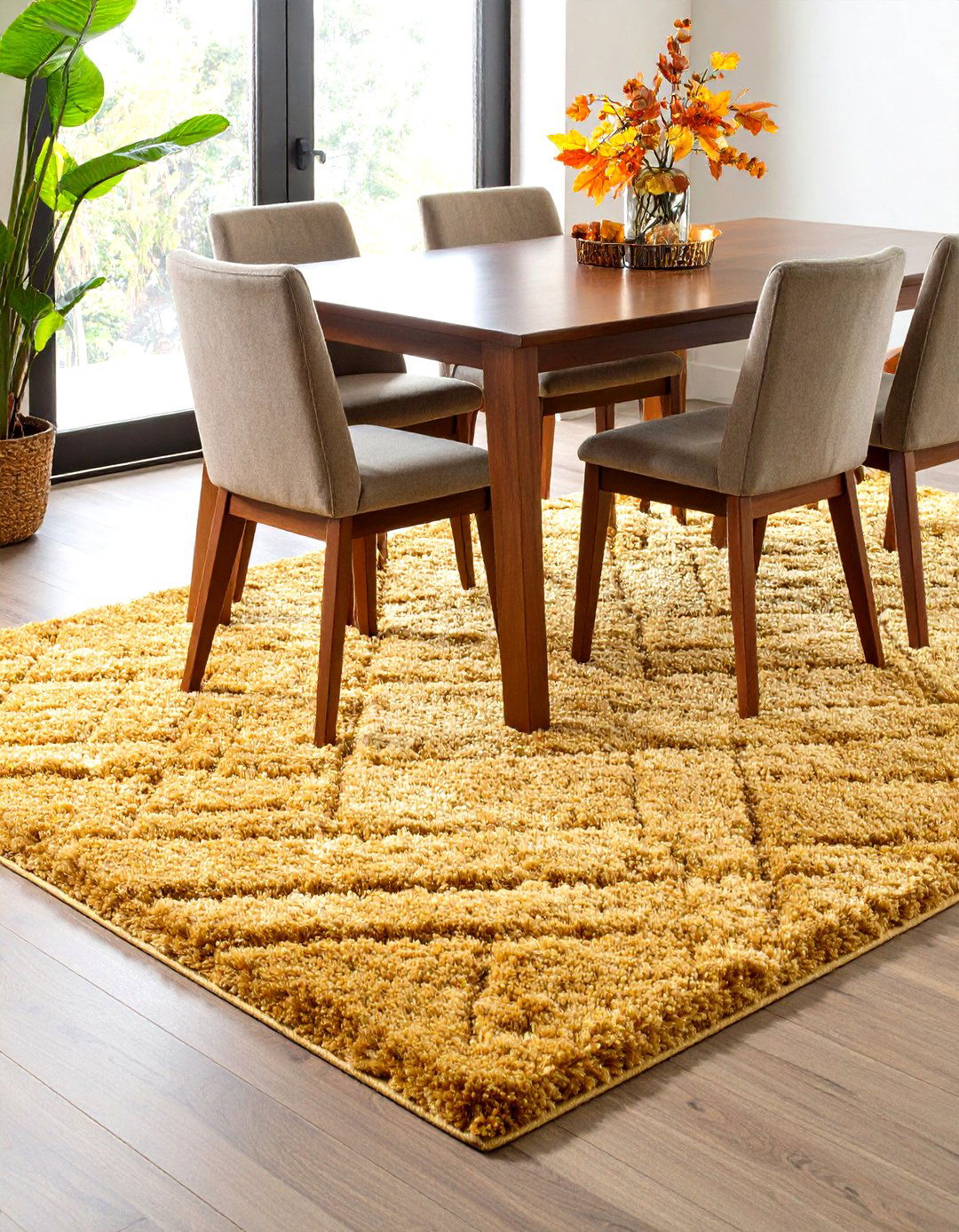
Thick, plush shag rugs added crucial texture and warmth to 70s dining rooms , creating cozy foundations that invited barefoot relaxation after formal meals. These deep-pile carpets came in vibrant colors including harvest gold, avocado green, and burnt orange , often featuring bold patterns or solid hues that complemented the era's adventurous design approach. Contemporary shag rugs offer neutral colors that blend with modern interiors while providing the same luxurious underfoot experience. Choose washable cotton or synthetic options for dining areas where spills are concerns. The textural contrast between smooth teak surfaces and plush floor coverings creates visual depth that enhances the room's overall sensory appeal. Position large rectangular rugs to accommodate all dining chairs, even when pulled out from the table.
6. Geometric Wallpaper Patterns for Bold 70s Dining Statements
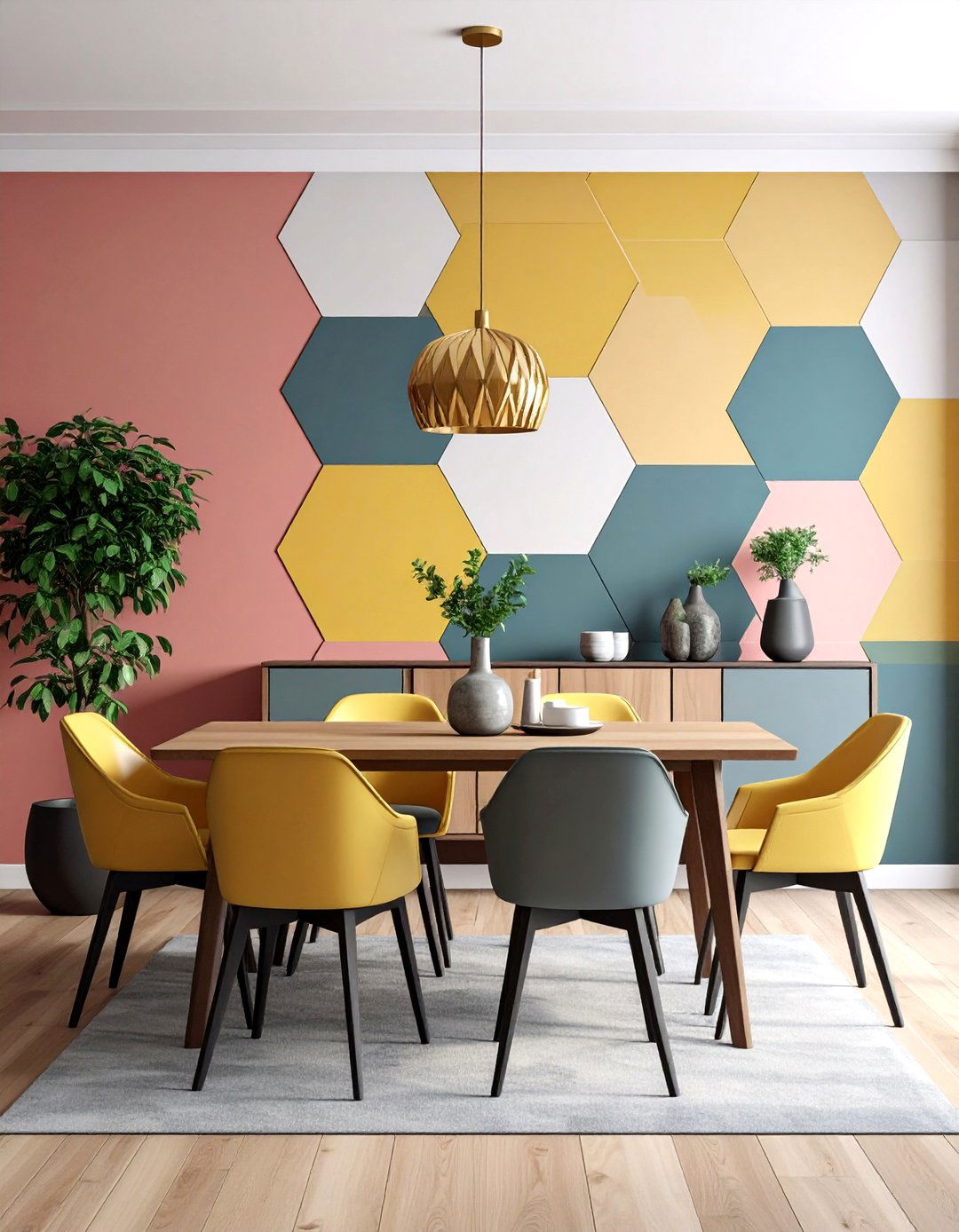
Bold geometric patterns dominated 70s wallpaper designs, featuring repeating shapes in contrasting colors that energized dining room walls with dynamic visual movement. Squares, circles, hexagons, and psychedelic swirls created modern backdrops that reflected the decade's experimental artistic spirit. These striking patterns work best on single accent walls to avoid overwhelming smaller dining spaces. Contemporary geometric wallpapers offer updated color palettes while maintaining the bold graphic appeal that made 70s patterns so memorable. Consider removable wallpaper options for rental properties or spaces where design flexibility is important. Metallic accents in gold or copper enhance geometric designs, adding glamorous touches that catch light from period-appropriate fixtures. Balance busy patterns with simpler furniture silhouettes and solid-colored accessories.
7. Harvest Gold Dining Room Accents for Warm Retro Appeal
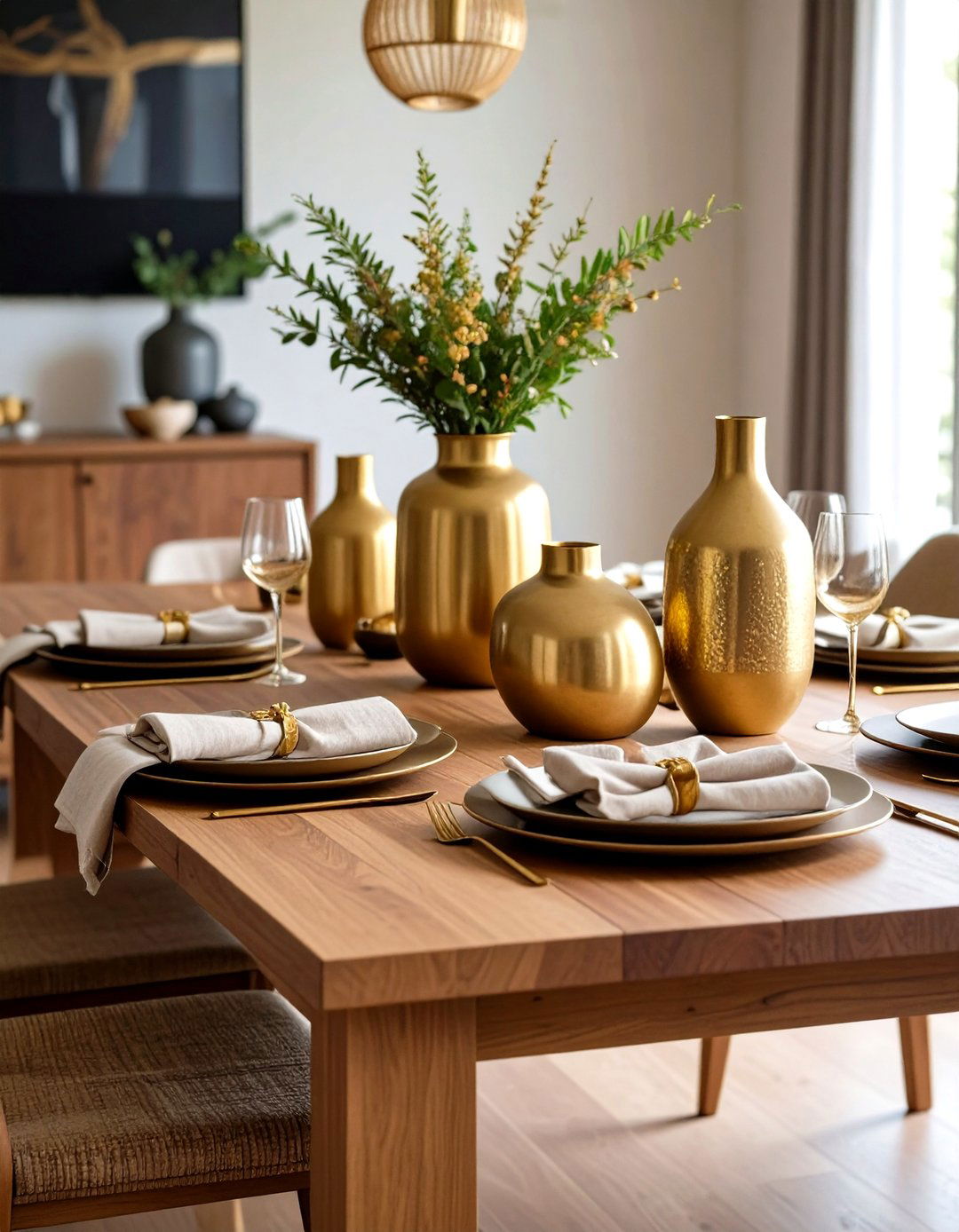
Harvest gold brought rich, warm sophistication to 70s dining rooms , creating inviting atmospheres that encouraged family gatherings and entertaining. This versatile color works beautifully in textiles, ceramic pieces, and decorative accessories without overwhelming neutral color schemes. Period-authentic applications included carpet, appliances, and upholstery fabrics that created cohesive design themes throughout connected living spaces. Modern interpretations might incorporate harvest gold through artwork, throw pillows, or table linens for subtle vintage nods. The color's inherent warmth complements both natural wood finishes and darker painted surfaces. Consider brass light fixtures and copper serving pieces that echo harvest gold's metallic undertones. This timeless hue bridges the gap between bold retro statement and contemporary sophistication, making it accessible for various decorating preferences.
8. Macrame Wall Hangings for Bohemian 70s Dining Character
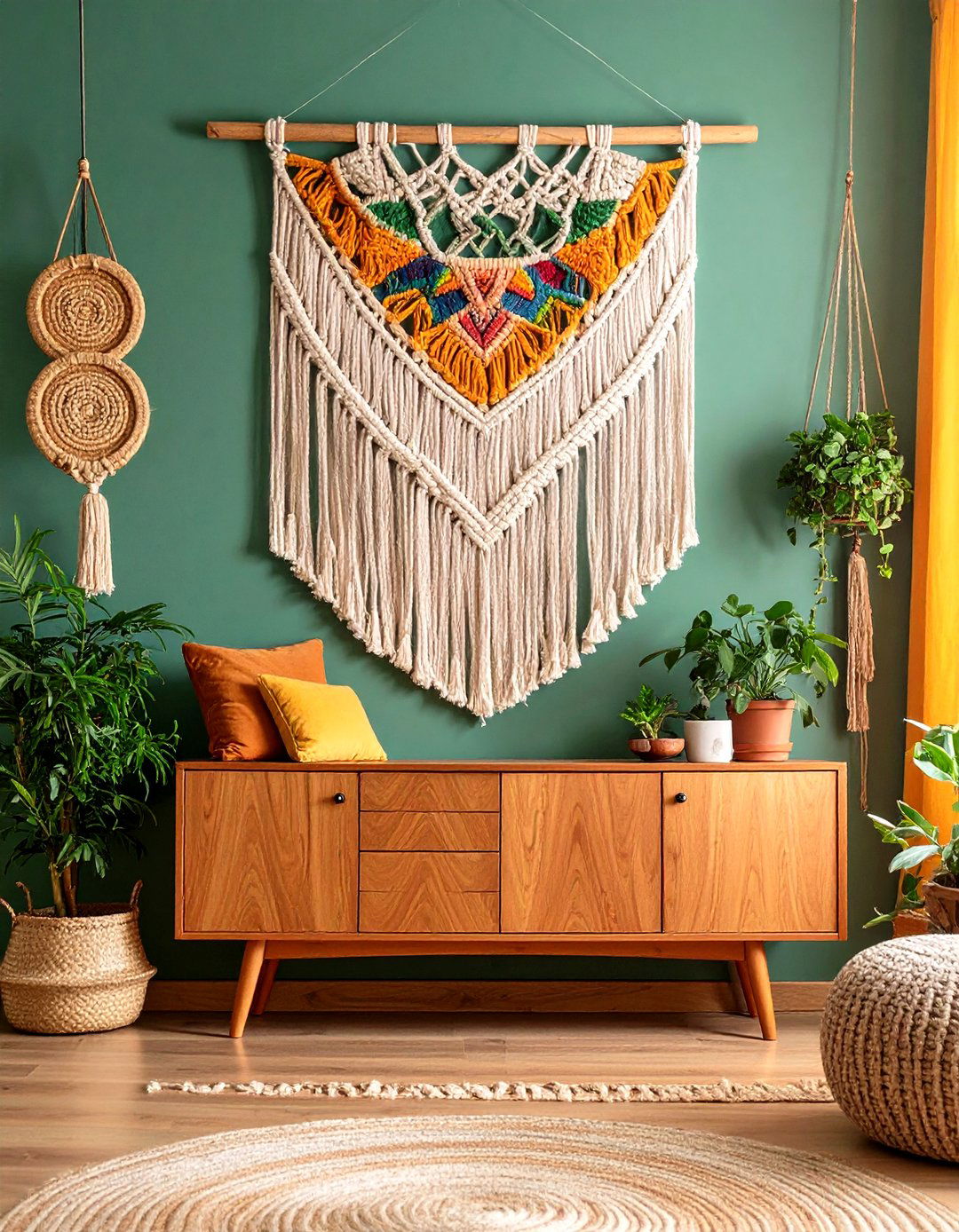
Macrame wall hangings epitomized the 70s bohemian spirit, adding handcrafted texture and organic appeal to dining room walls. These woven fiber artworks created visual softness that balanced harder furniture surfaces while introducing artisanal character that reflected the era's counterculture values. Natural cotton or jute fibers work best for authentic appearance, though synthetic options offer easier maintenance in busy dining areas. Large-scale pieces serve as dramatic focal points above sideboards or buffets, while smaller designs create gallery walls when grouped with other period artwork. The organic, handcrafted element complements natural materials commonly used in 70s design schemes. Modern macrame often incorporates colored fibers or geometric patterns that update traditional techniques for contemporary spaces. These versatile pieces add three-dimensional interest without requiring significant wall space or permanent installation.
9. Wood Paneling Walls for Cozy 70s Dining Ambiance
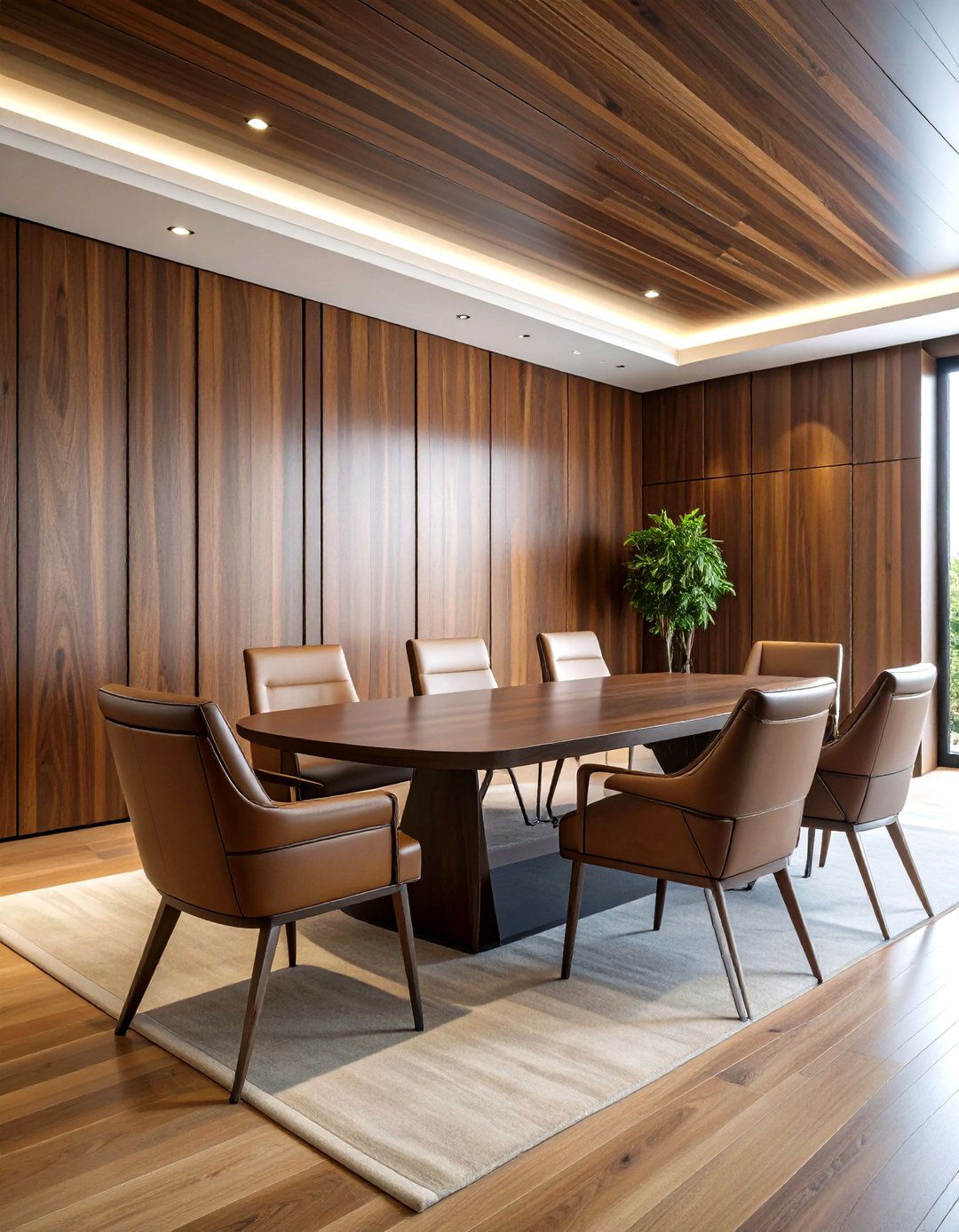
Dark wood paneling brought cabin-like warmth and coziness to 70s dining spaces , creating intimate environments perfect for extended family meals and entertaining. Rich walnut, oak, or pine boards installed horizontally or vertically add architectural interest while providing excellent backdrops for period artwork and decorative accessories. Wooden wall paneling creates instantly moodier and cozier atmospheres when paired with leather accents and curved seating. Balance darker wood tones with lighter ceiling colors and adequate lighting to prevent spaces from feeling cramped. Modern applications might feature painted paneling in contemporary colors while maintaining the textural benefits of traditional wood installation. Consider partial paneling that extends halfway up walls, topped with coordinating paint colors for visual balance. The natural material connects beautifully with teak furniture and other organic elements.
10. Tulip Dining Tables for Sleek 70s Modernist Appeal
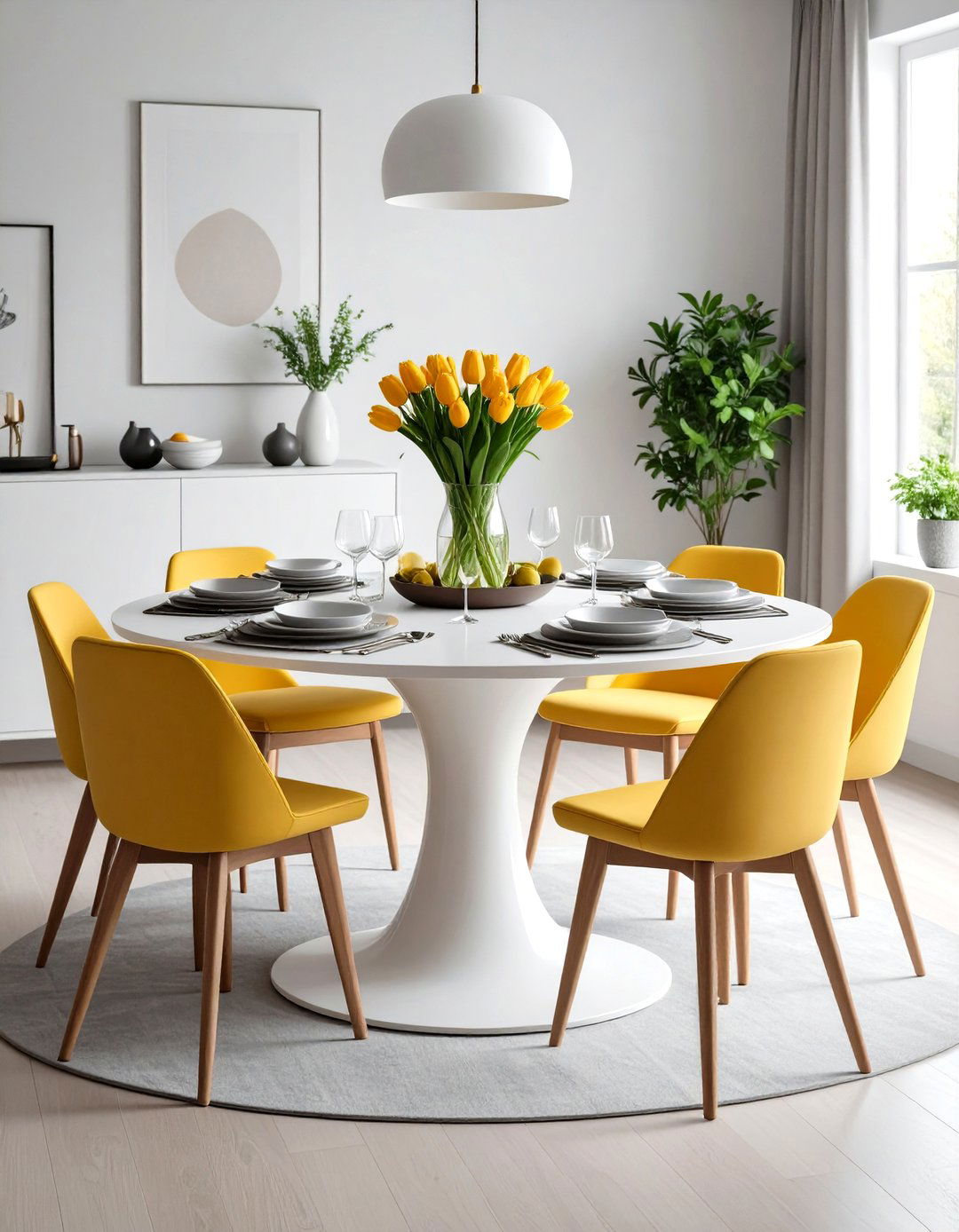
Tulip tables featuring sleek pedestal bases and circular tops defined 1970s modernist dining furniture , offering space-saving elegance that complemented smaller homes and apartments. These stylish pieces were often made from plastic or fiberglass , materials that embodied the era's fascination with space-age technology and futuristic design concepts. The single central support eliminates leg interference, creating more comfortable seating arrangements around the table's perimeter. Contemporary versions often feature marble, wood, or composite tops mounted on metal bases that provide similar aesthetic appeal with enhanced durability. White finishes create clean, minimalist looks that brighten dining areas, while colored options add playful personality. These versatile tables work equally well in formal and casual dining settings, adapting to various decorating themes beyond strict 70s authenticity.
11. Burnt Orange Dining Room Color Schemes for Energetic Warmth
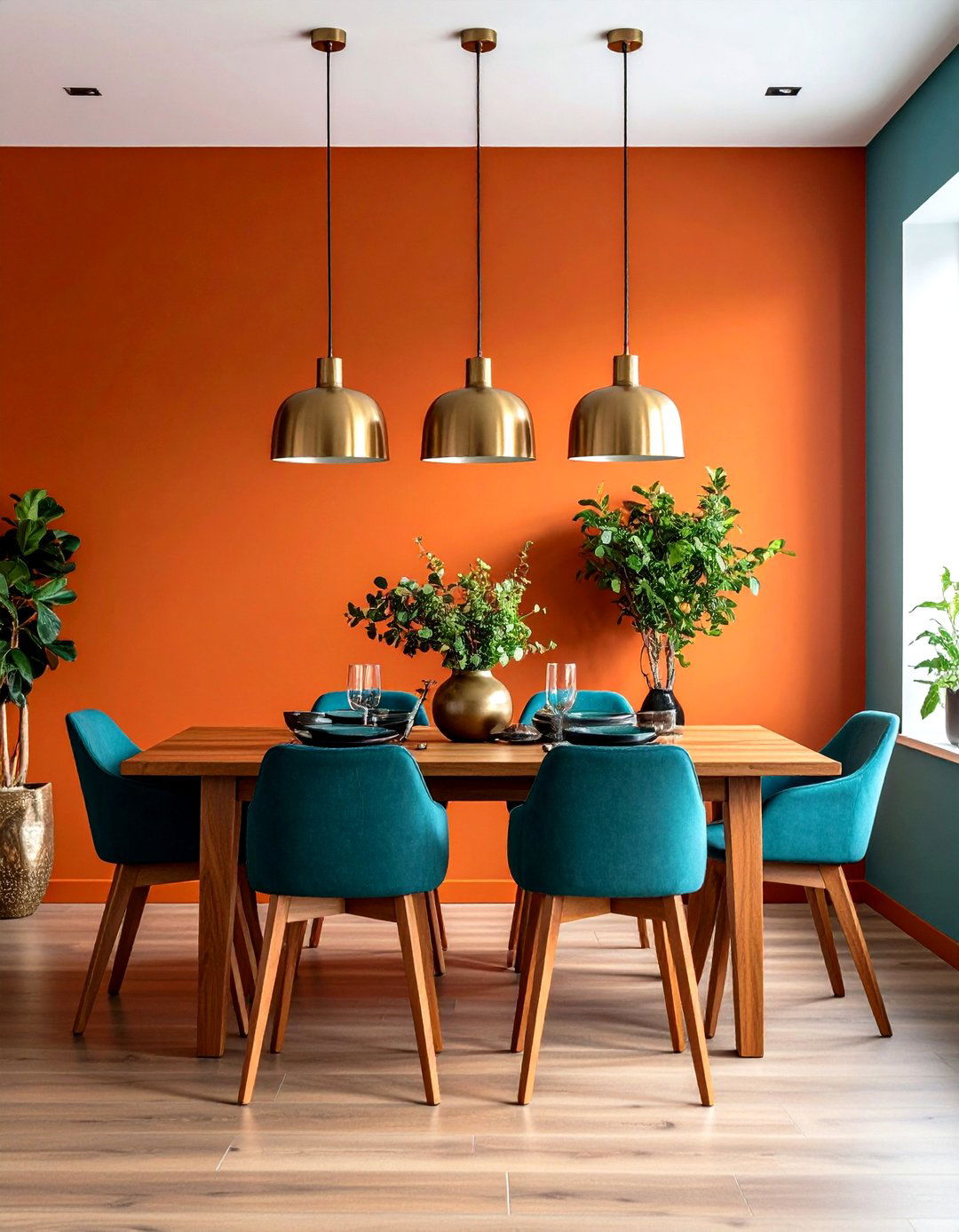
Burnt orange radiated energy and positivity throughout 70s dining rooms , creating vibrant backdrops that stimulated appetite and conversation during family meals. This bold hue works exceptionally well as accent wall color, paired with neutral whites, creams, and browns for balanced visual appeal. The color appeared in everything from paint to upholstery , creating cohesive design themes that extended throughout connected living areas. Modern applications benefit from using burnt orange in smaller doses through artwork, textiles, or ceramic accessories rather than overwhelming wall coverage. The warm undertones complement brass fixtures and wood furniture beautifully, while cooler accent colors like teal or navy provide striking contrast. Consider seasonal rotation of orange accents to maintain freshness while honoring the decade's adventurous color philosophy that celebrated bold personal expression over conservative neutrals.
12. Molded Plastic Dining Chairs for Colorful 70s Fun
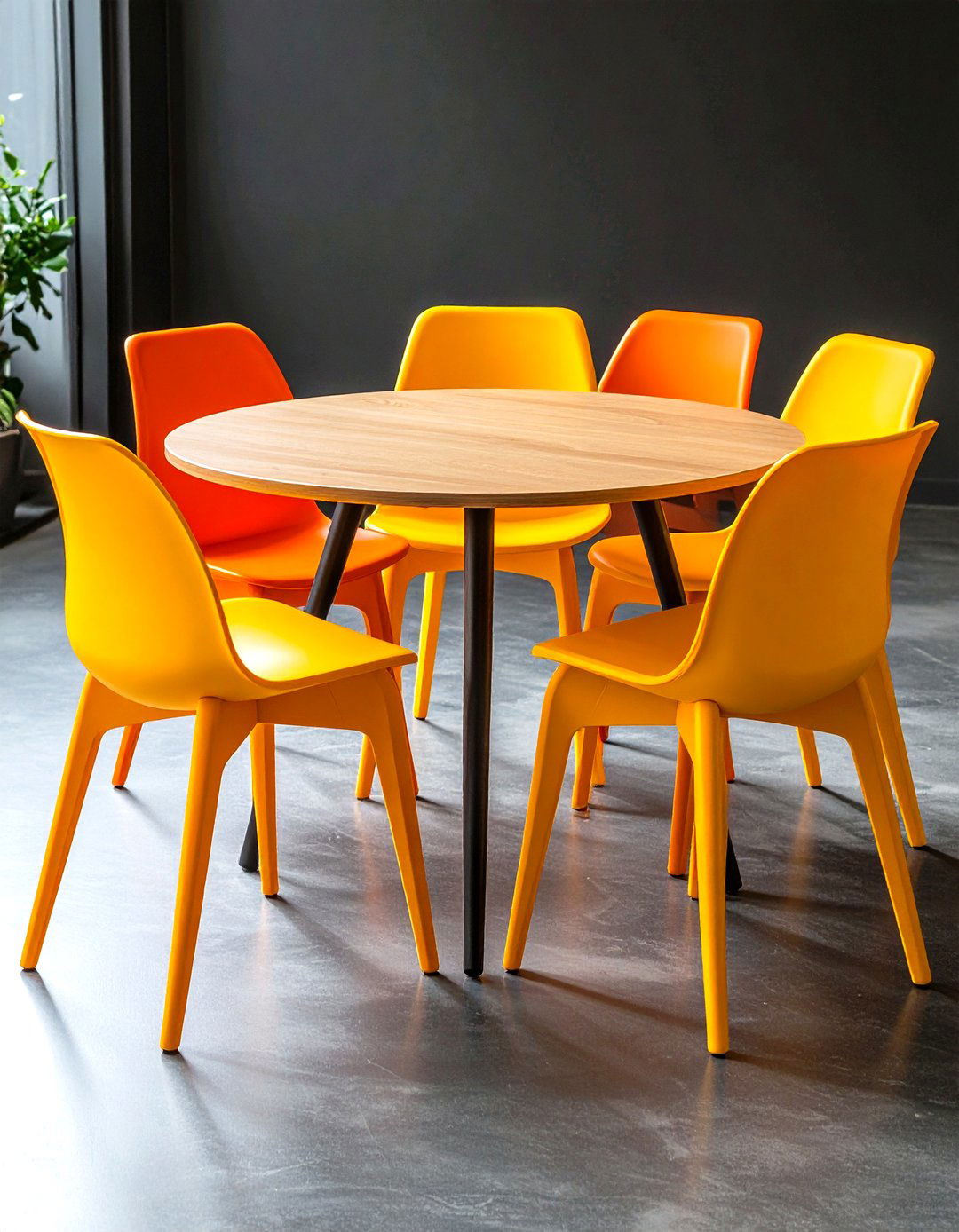
Molded plastic chairs in bright colors like orange, yellow, and green became 70s dining room staples , offering lightweight, easy-maintenance seating that reflected the era's optimistic outlook. These affordable pieces allowed homeowners to experiment with bold color combinations without significant financial investment. The chairs were both functional and stylish, adding fun pops of color that could be easily rearranged or replaced as tastes evolved. Contemporary versions often feature ergonomic improvements while maintaining the distinctive curved silhouettes that made originals so appealing. Stackable designs offer practical storage solutions for smaller spaces or occasional entertaining needs. Mix different colors around the same table for eclectic appeal, or use matching sets for more formal presentations. The weather-resistant properties make these chairs suitable for indoor-outdoor dining transitions that extend entertaining seasons.
13. Pendant Lighting Designs for 70s Dining Table Illumination
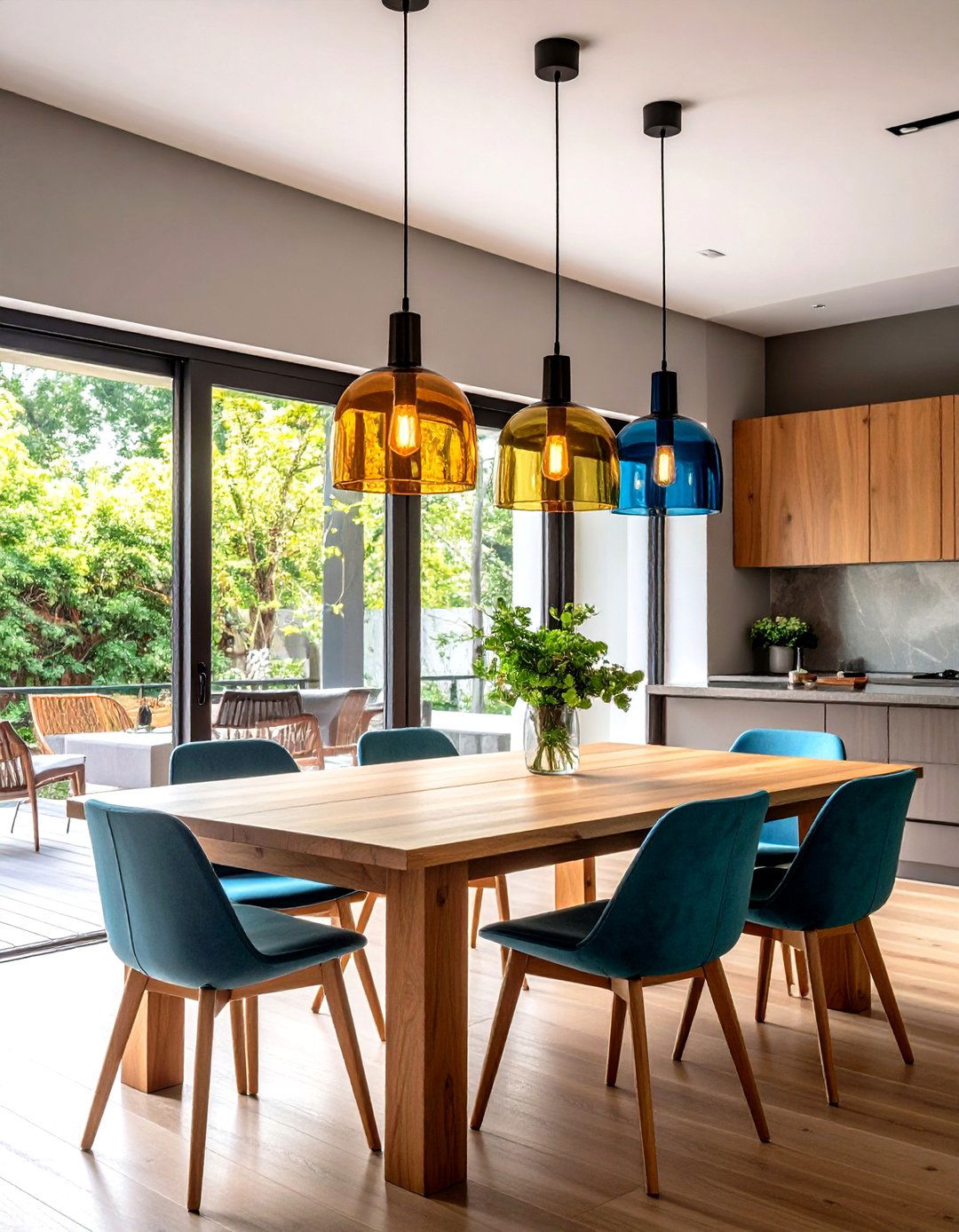
Glass or metal pendant lights suspended over dining tables provided both functional illumination and decorative appeal in 70s design schemes. These fixtures offered more intimate lighting than traditional chandeliers while maintaining adequate brightness for dining activities. Oversized light fittings and colored glass accents elevated the look with retro-modern edges . Amber, green, or blue glass shades filter light beautifully while adding colorful accents that complement period color schemes. Multiple pendants installed at varying heights create dynamic visual arrangements suitable for longer dining tables or kitchen islands. Dimming capabilities allow versatile mood control from bright task lighting during meals to softer ambient illumination for entertaining. Modern LED options provide energy efficiency while maintaining authentic aesthetic appeal through careful bulb selection and shade materials.
14. Rattan and Wicker Dining Furniture for Natural 70s Texture
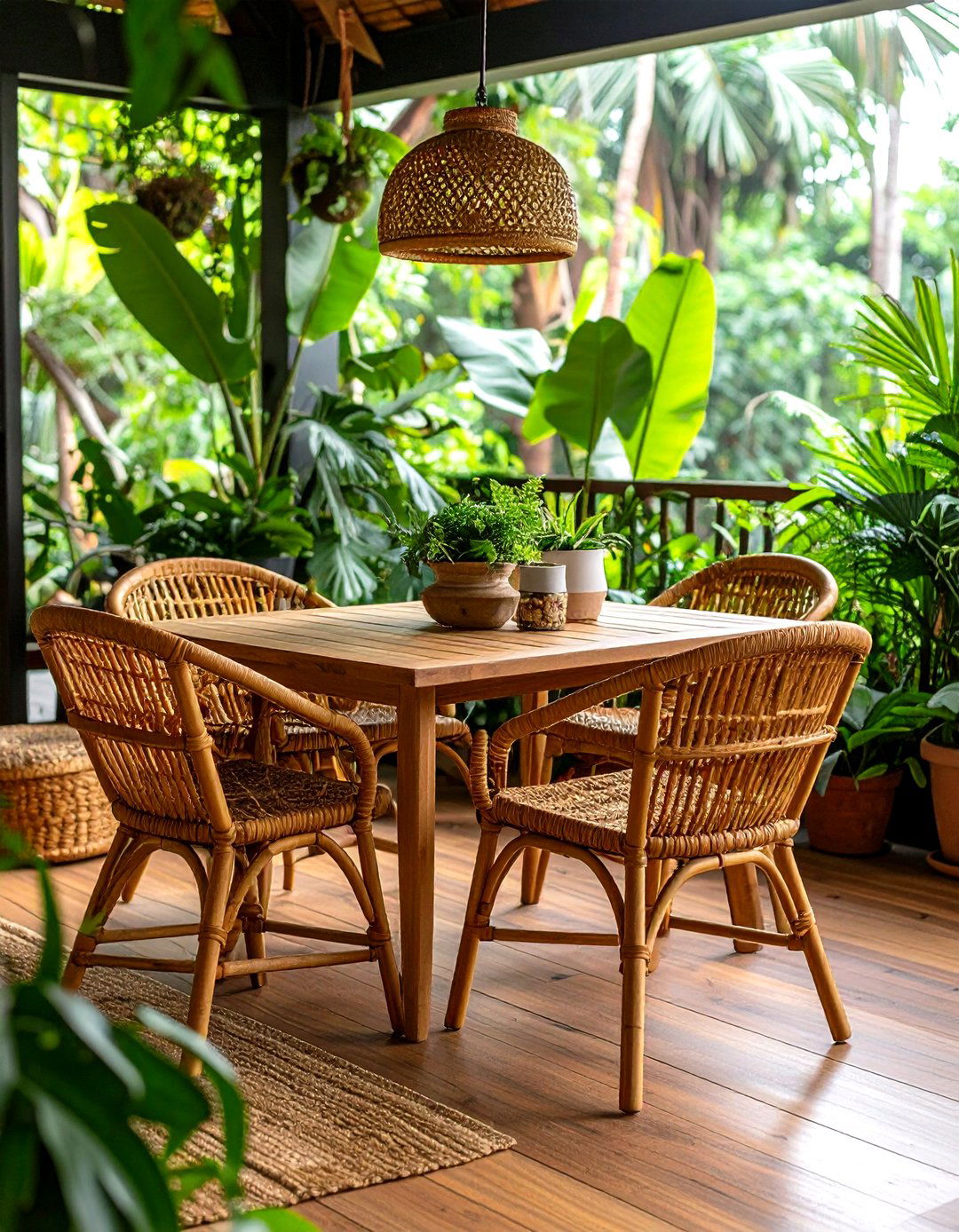
Rattan and wicker furniture brought natural textures and laid-back vibes to 70s dining rooms , perfectly complementing the era's environmental consciousness and casual lifestyle preferences. These organic materials add visual warmth while providing comfortable, breathable seating ideal for extended dining experiences. Natural materials like rattan add warmth and earthy touches that balance bolder color choices and synthetic materials common in period design schemes. Peacock chairs, basket-weave dining chairs, and rattan bar carts create cohesive natural themes that connect with outdoor living trends. Modern rattan often features improved weather resistance and ergonomic design while maintaining authentic textural appeal. Consider mixing rattan seating with other materials for eclectic appeal, or use all-natural combinations for bohemian-inspired dining spaces. The lightweight construction allows easy rearrangement for flexible entertaining configurations.
15. Lava Lamps for Mesmerizing 70s Dining Ambiance
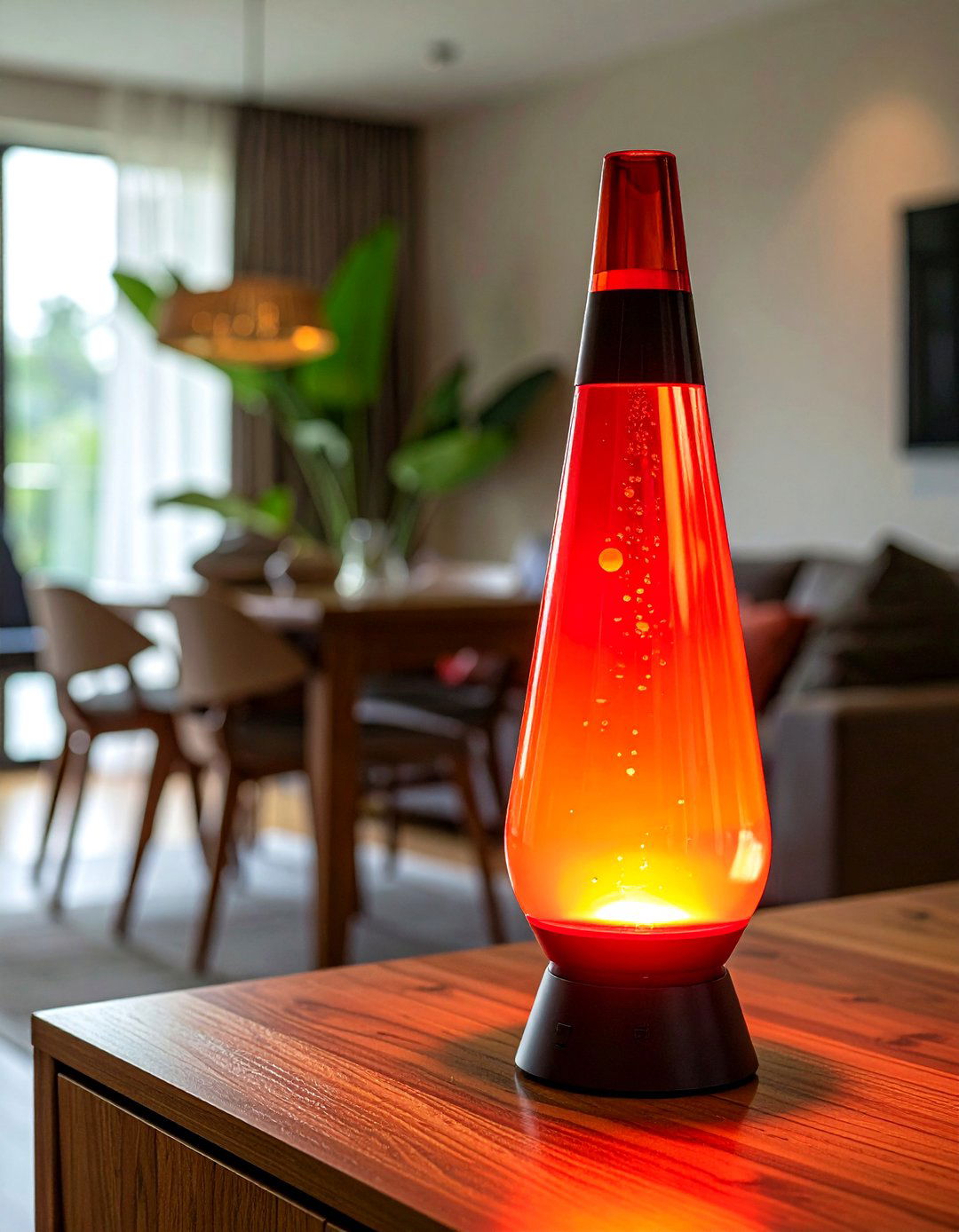
Lava lamps with their mesmerizing glowing liquid became popular table decorations in 70s dining rooms , adding playful and relaxing ambiance that reflected the decade's psychedelic cultural influences. These quirky accessories provided soothing, colorful displays that served as conversation starters during dinner parties and family gatherings. Place them on sideboards, serving tables, or corner surfaces where the hypnotic motion won't distract from dining activities. Contemporary versions offer improved safety features and energy efficiency while maintaining the classic bulbous silhouettes and fluid motion that made originals so captivating. Choose colors that complement your overall design scheme, from classic orange-red combinations to more subdued blue or green options. The soft, indirect lighting creates cozy atmosphere suitable for intimate dining experiences while adding authentic period character that spans generations.
16. Chrome and Brass Dining Room Accents for Metallic 70s Glamour
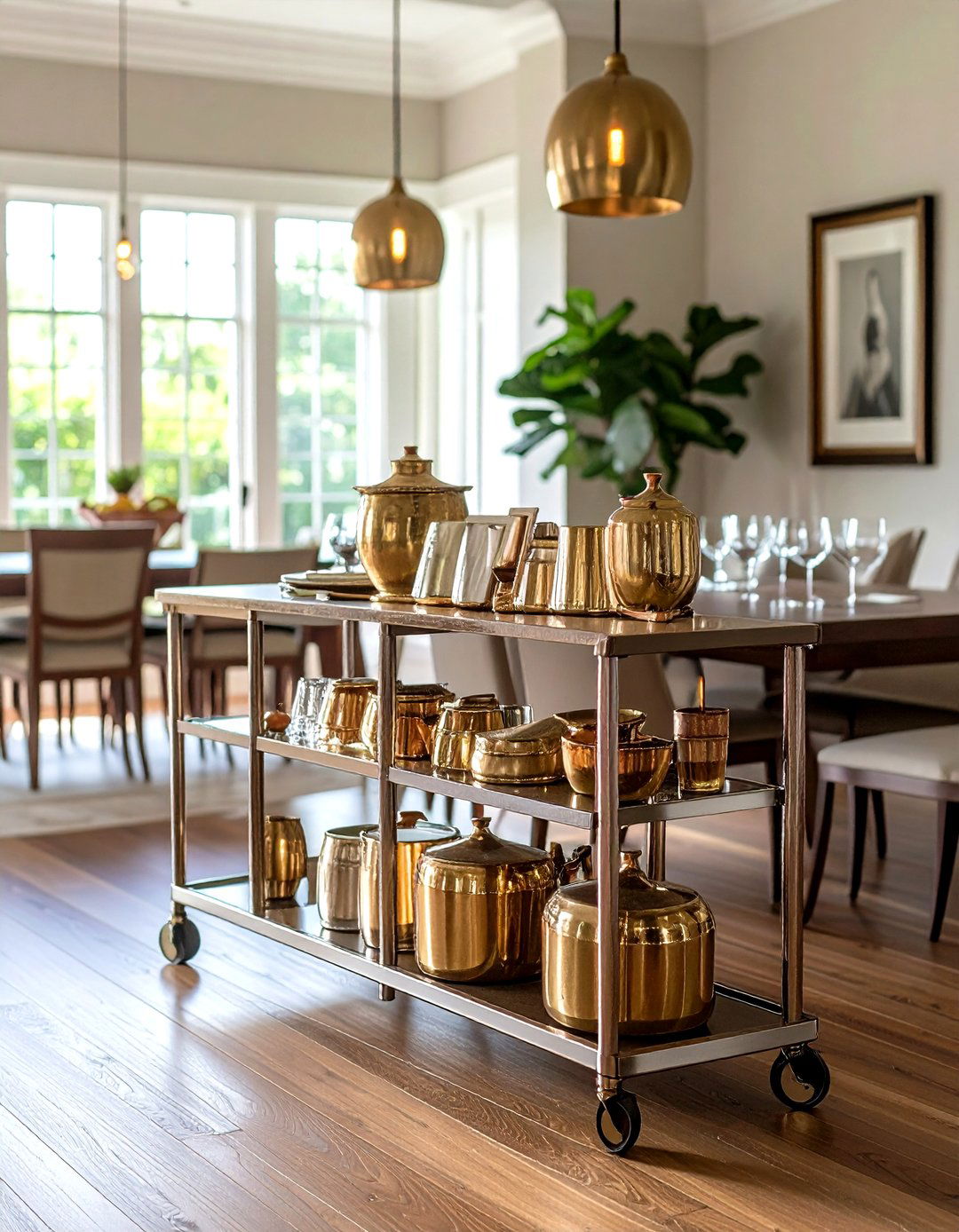
Chrome and brass fixtures on furniture legs, lighting, and decorative accessories brought metallic glamour that reflected the 70s fascination with space-age materials and futuristic design concepts. These shiny surfaces create visual contrast against natural wood and fabric textures while adding sophisticated polish to casual dining environments. Chrome bar carts, brass serving pieces, and metallic picture frames introduce period-appropriate shine without overwhelming neutral color schemes. Polish chrome regularly to maintain brilliant reflective qualities, while brass develops attractive patina over time that adds vintage character. Modern reproductions often feature protective coatings that reduce maintenance requirements while preserving authentic metallic appeal. Mix warm brass tones with cooler chrome accents for dynamic variety, or choose one metal family for cohesive elegance that bridges retro styling with contemporary sophistication throughout your dining space.
17. Open Floor Plans for Connected 70s Dining and Living
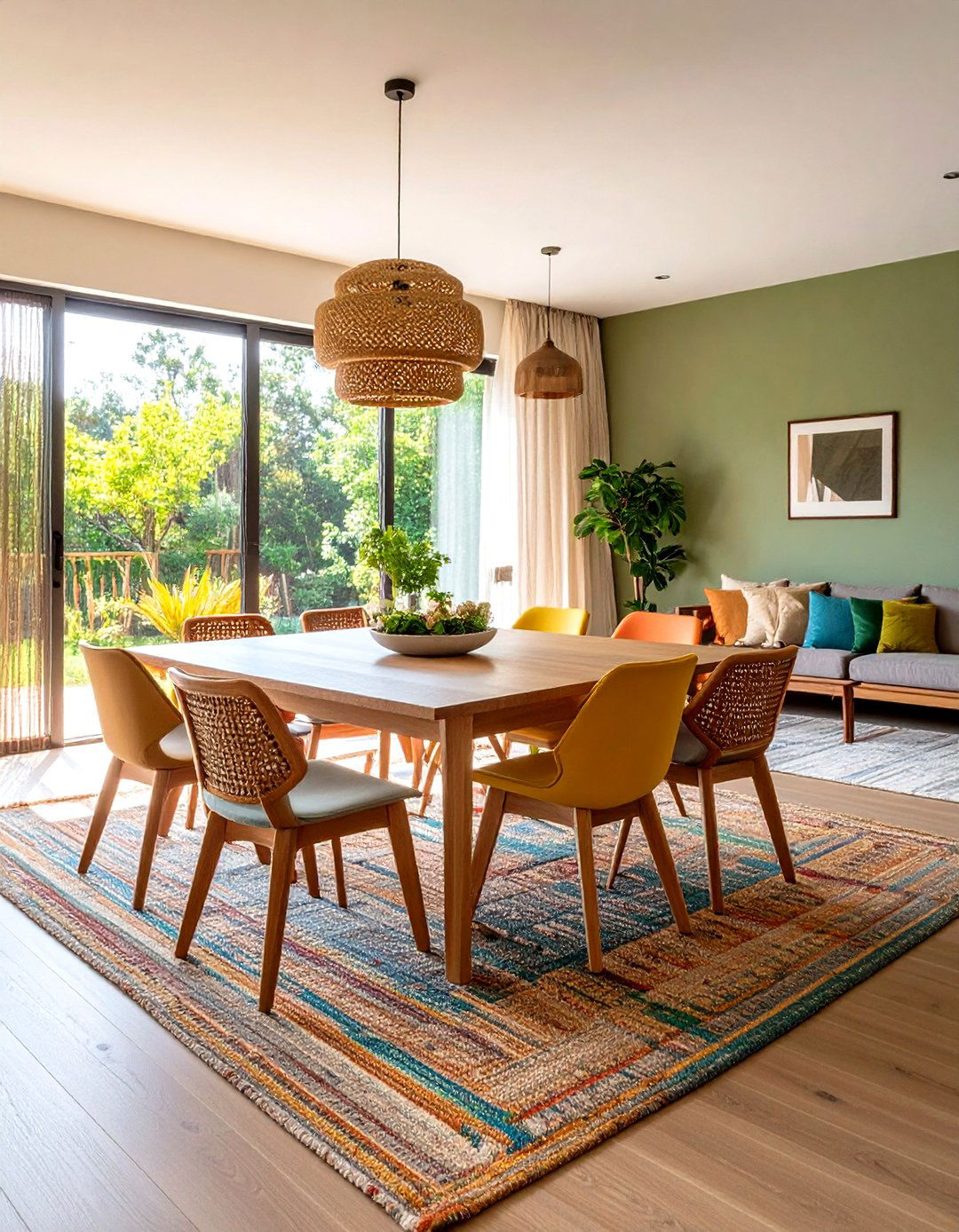
Open-plan layouts blending dining spaces into living rooms reflected 70s social trends that emphasized family togetherness and casual entertaining over formal separation. These integrated spaces create larger visual footprints while encouraging social interaction that spans cooking, dining, and relaxation activities. Use area rugs, furniture placement, and lighting changes to define distinct zones without physical barriers that interrupt flow. Sunken living areas often connected to dining spaces , creating dramatic level changes that added architectural interest to ranch-style homes. Modern open concepts benefit from consistent flooring materials and coordinated color schemes that unify different functional areas. Consider sliding panels or decorative screens that provide flexibility between open and semi-private configurations depending on entertaining needs or family activities requiring different levels of separation.
18. Statement Mirrors for 70s Dining Room Light Reflection
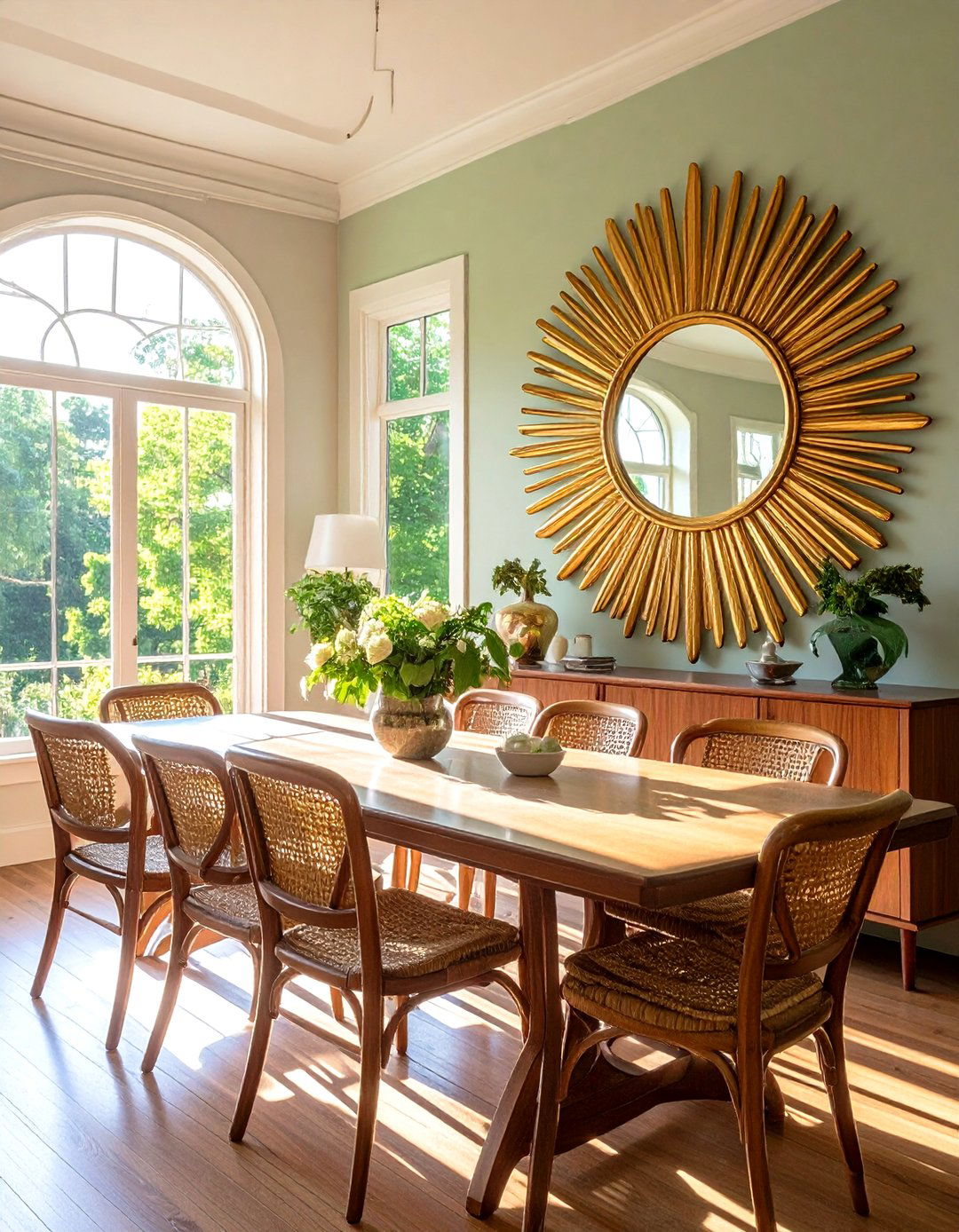
Large, ornate, or uniquely shaped mirrors served as dramatic focal points in 70s dining rooms while amplifying natural and artificial light throughout the space. Mirrors reflect more light throughout rooms , making smaller dining areas appear larger and brighter. Sunburst designs, geometric shapes, and heavily framed pieces complement the era's bold decorative philosophy. Brass frames and stainless steel accents coordinate with period-appropriate metallic accessories and light fixtures. Position mirrors opposite windows to maximize natural light reflection, or use them to create interesting sight lines between connected living spaces. Contemporary applications might feature oversized round mirrors or asymmetrical designs that update traditional concepts for modern homes. The reflective surfaces also showcase beautiful table settings and dinner party arrangements, adding glamorous appeal that enhances special occasion dining experiences.
19. Ceramic and Stoneware Dining Accessories for Earthy 70s Appeal
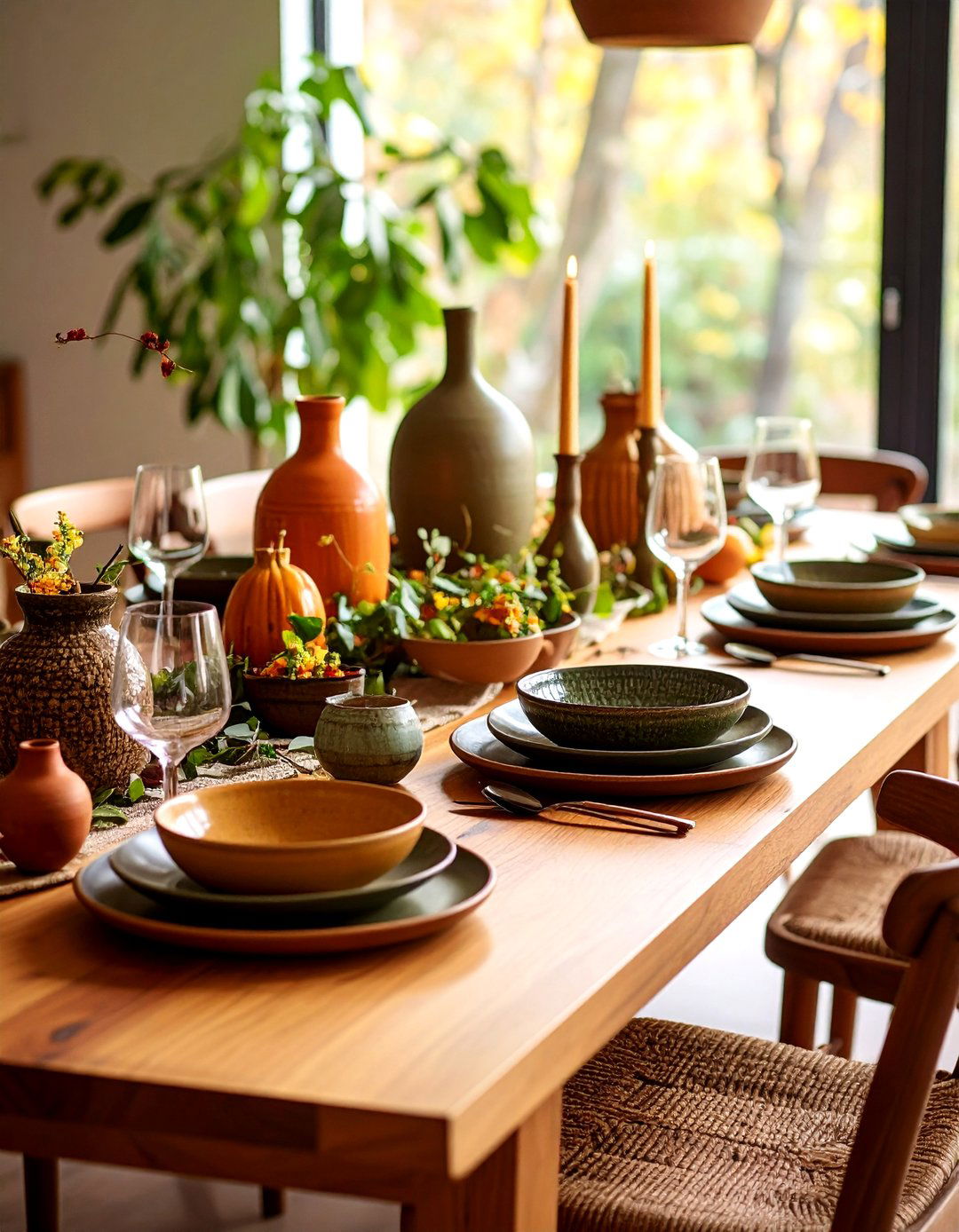
Stoneware crockery with earthy colors and rustic charm filled 70s dining rooms , providing durable, oven-safe dishes perfect for the era's popular casseroles and hearty family meals. These pieces featured natural glazes in brown, orange, and green tones that complemented wood furniture and natural fiber textiles throughout the space. Handcrafted ceramics reflect the decade's appreciation for artisanal quality over mass-produced perfection. Large serving bowls, textured vases, and sculptural candlesticks add three-dimensional interest to dining surfaces while providing functional beauty. Modern ceramic artists often create pieces inspired by 70s aesthetics, featuring earth tones and organic shapes that bridge vintage appeal with contemporary craftsmanship. Mix different pottery pieces for collected looks that develop over time, rather than purchasing complete matching sets that lack the personal character 70s decorators valued above formal coordination.
20. Mixed Seating Arrangements for Eclectic 70s Dining Personality
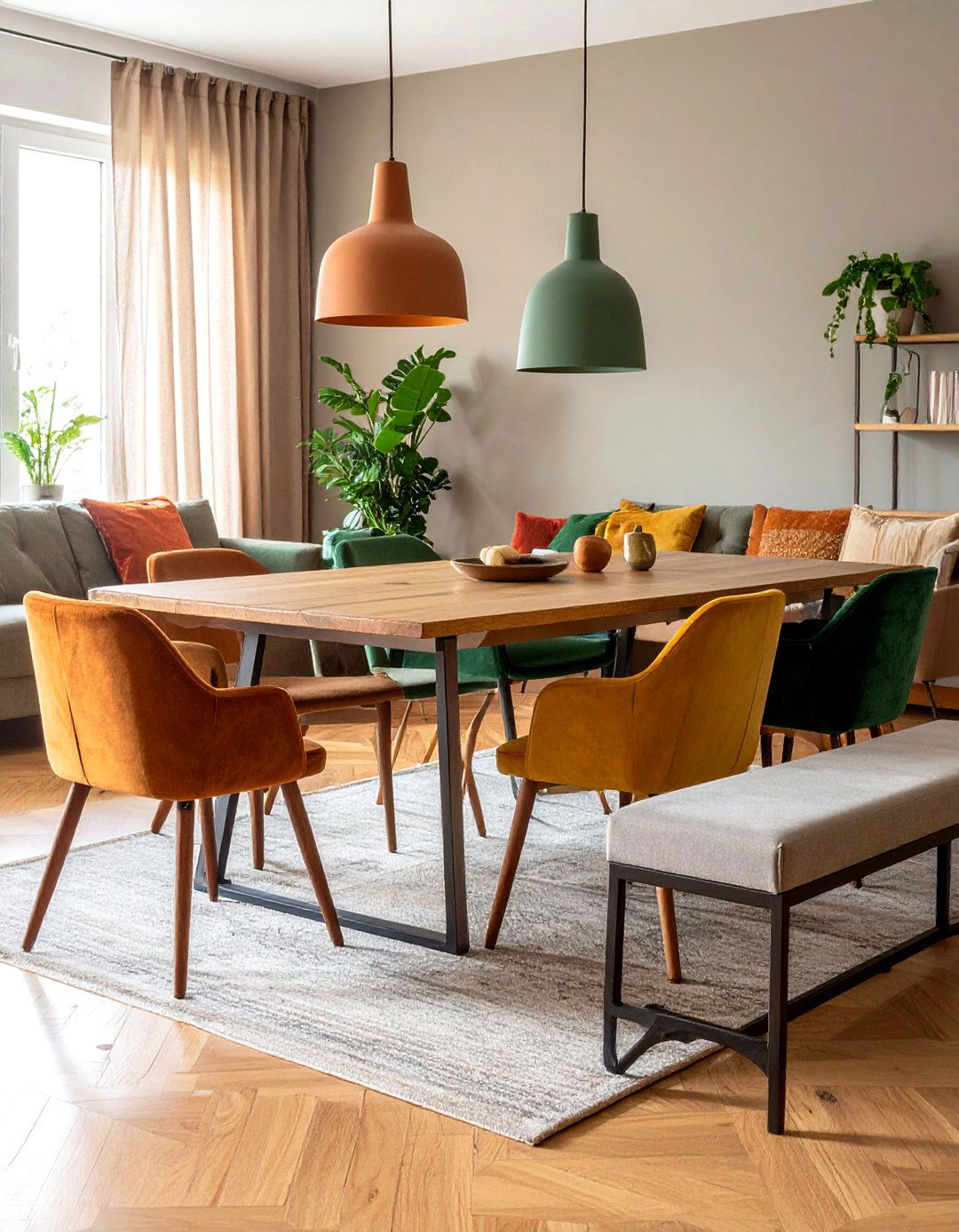
Combinations of different chairs, benches, and modular seating pieces created the collected, eclectic appeal that defined authentic 70s dining room style over matching furniture suites. Mix-and-match pieces from different styles and periods create collected looks that age well , reflecting personal taste and family history rather than showroom perfection. Combine upholstered chairs with wooden stools, velvet benches with metal frames, or vintage finds with contemporary reproductions for dynamic visual interest. Bold prints and earth-toned fabrics unite diverse pieces through coordinated color schemes rather than identical materials. This approach allows budget-conscious decorating that develops gradually as new pieces are discovered or inherited. The varied heights, textures, and styles create comfortable seating options suitable for different family members and dining occasions while maintaining the experimental spirit that made 70s design so memorable and personal.
Conclusion:
Creating an authentic 70s dining room requires careful balance between bold statement pieces and livable functionality that serves modern families. The era's distinctive blend of natural materials, vibrant colors, and geometric patterns continues influencing contemporary design through teak furniture, velvet seating, and metallic accents that add personality without overwhelming spaces. Today's minimalist revival of 70s aesthetics emphasizes sophisticated restraint while preserving the warmth and character that made the decade so appealing. Whether incorporating dramatic sputnik lighting, rich earth-tone color schemes, or textural elements like shag rugs and macrame, successful 70s dining rooms celebrate both nostalgia and practicality. These timeless design principles prove that well-executed retro styling transcends fleeting trends, creating gathering spaces that encourage conversation, comfort, and memorable family experiences for generations to appreciate and enjoy.


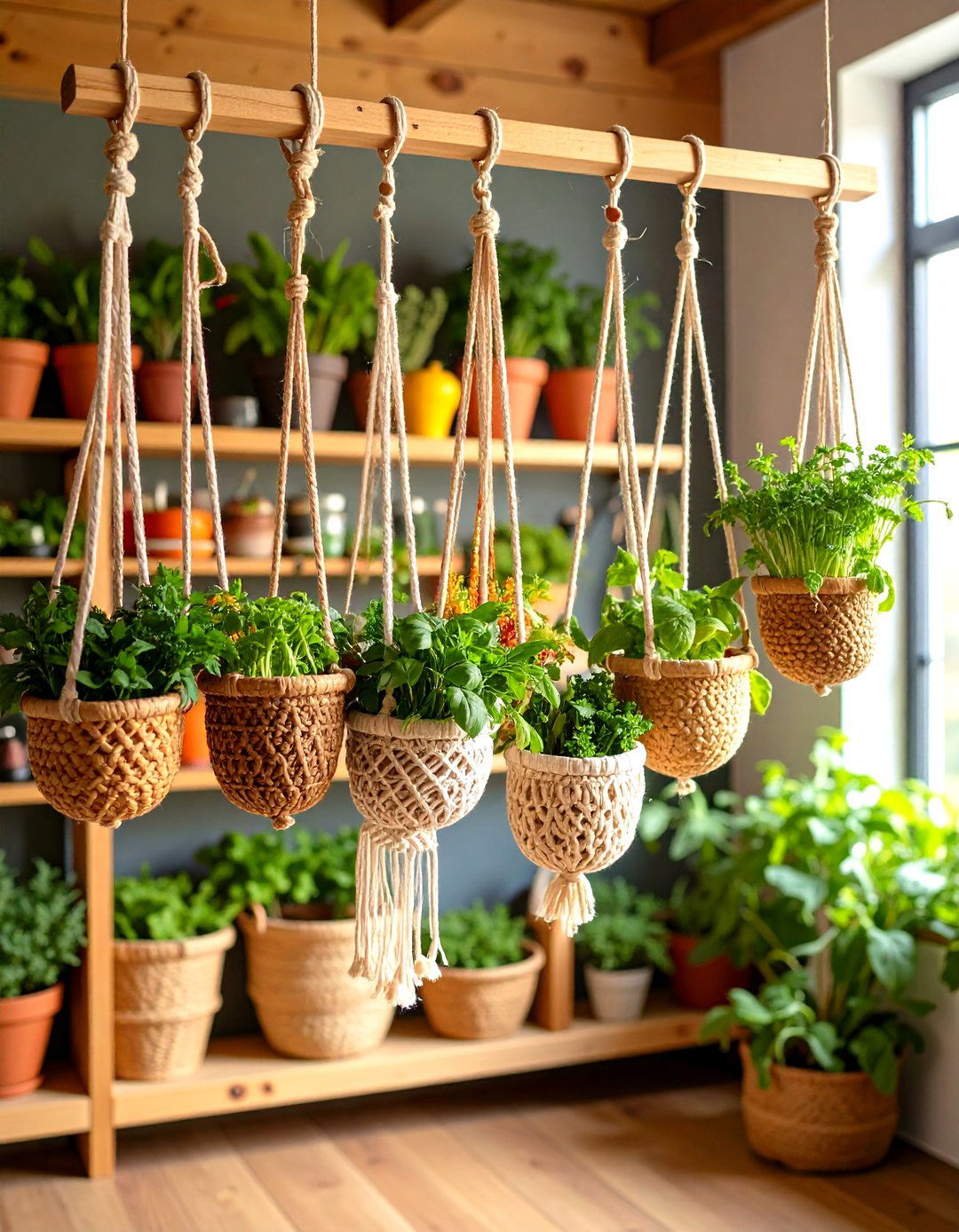
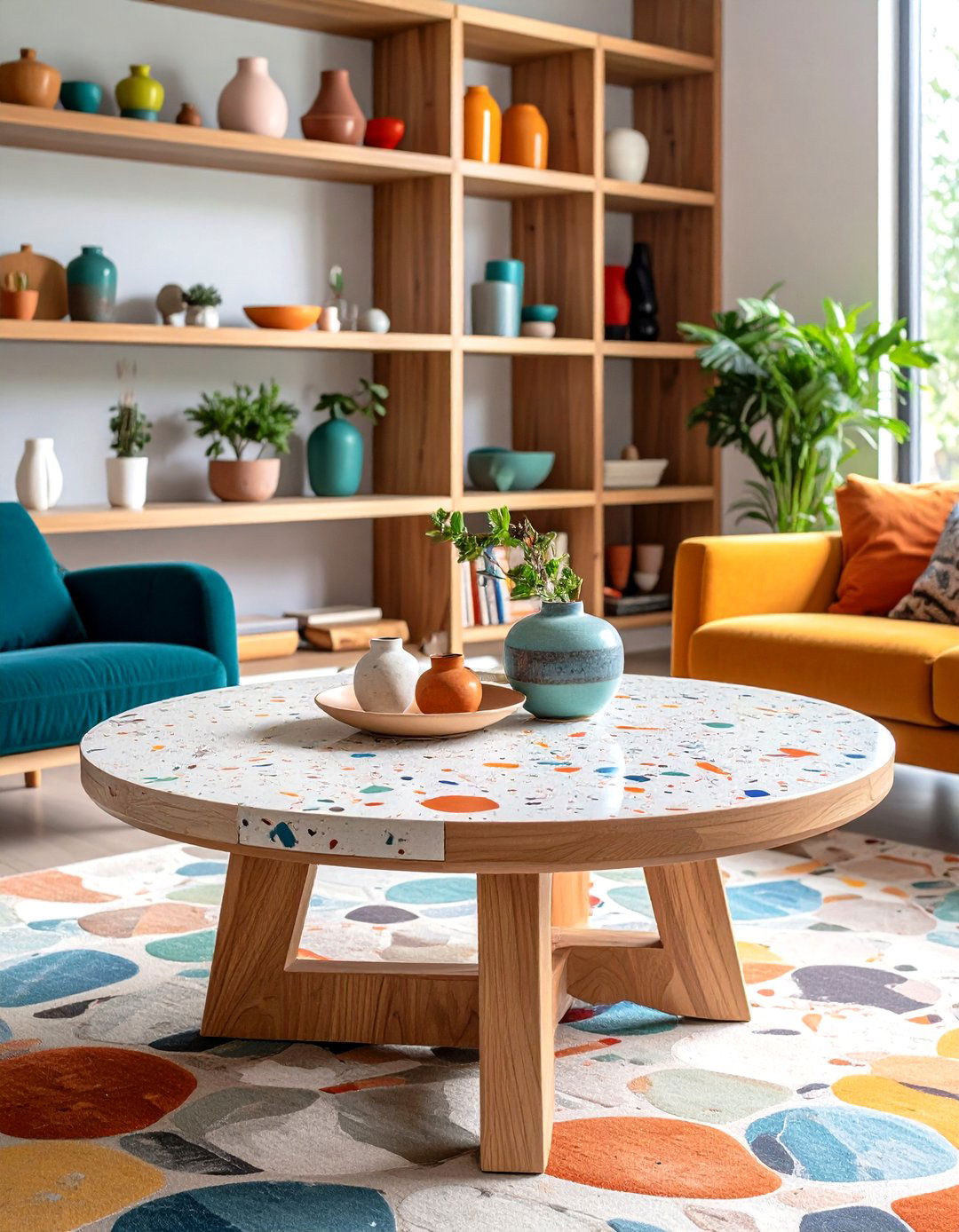
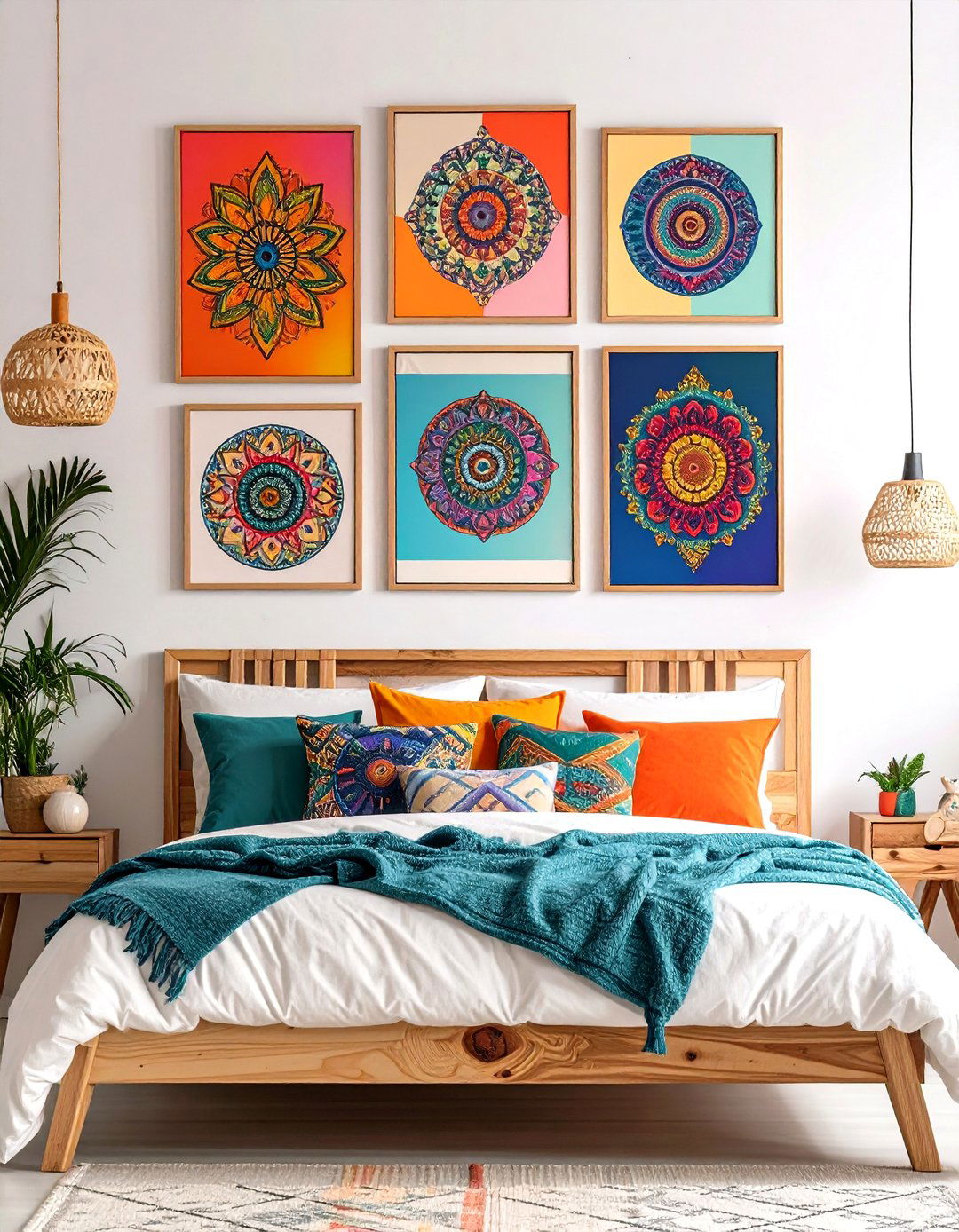

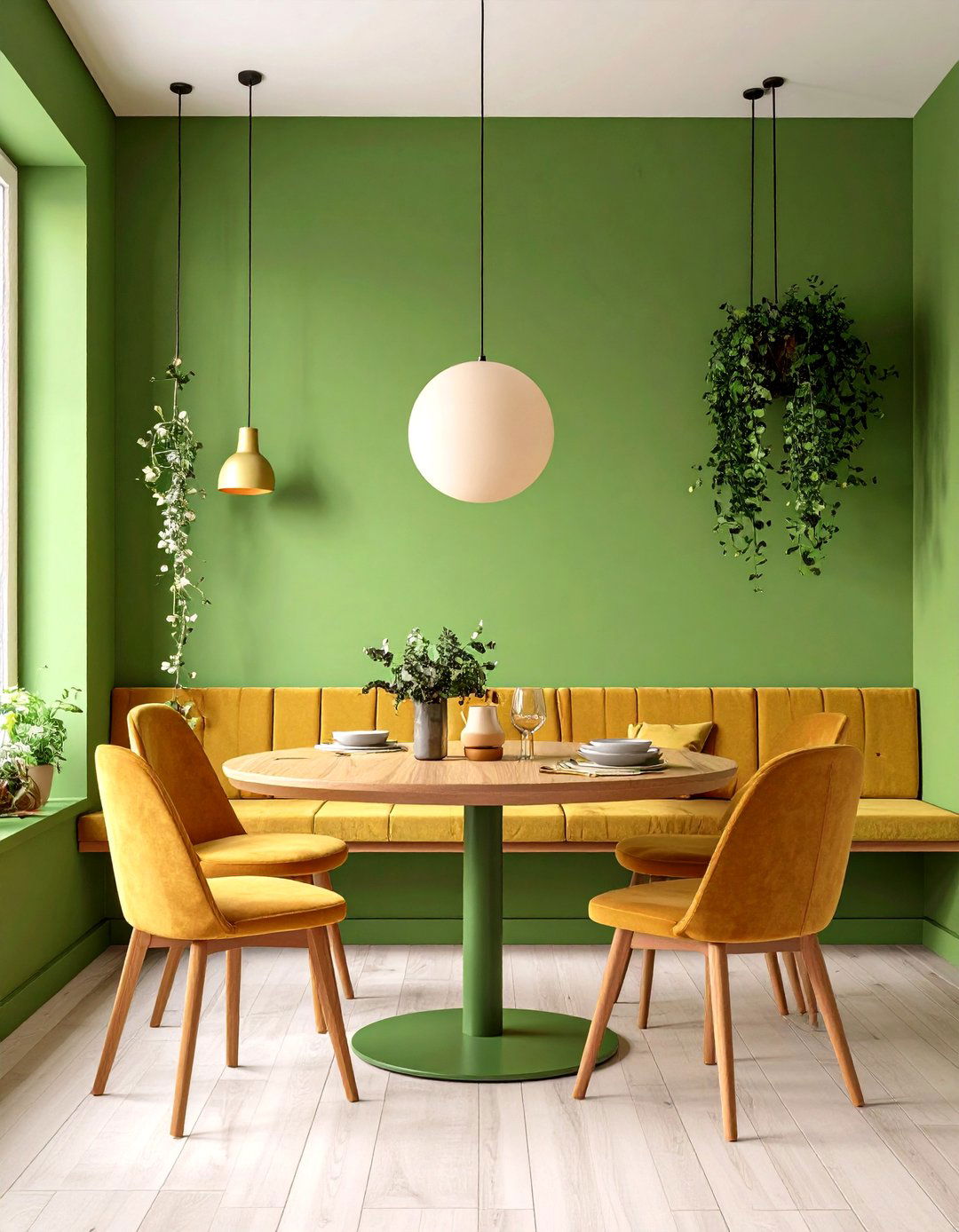
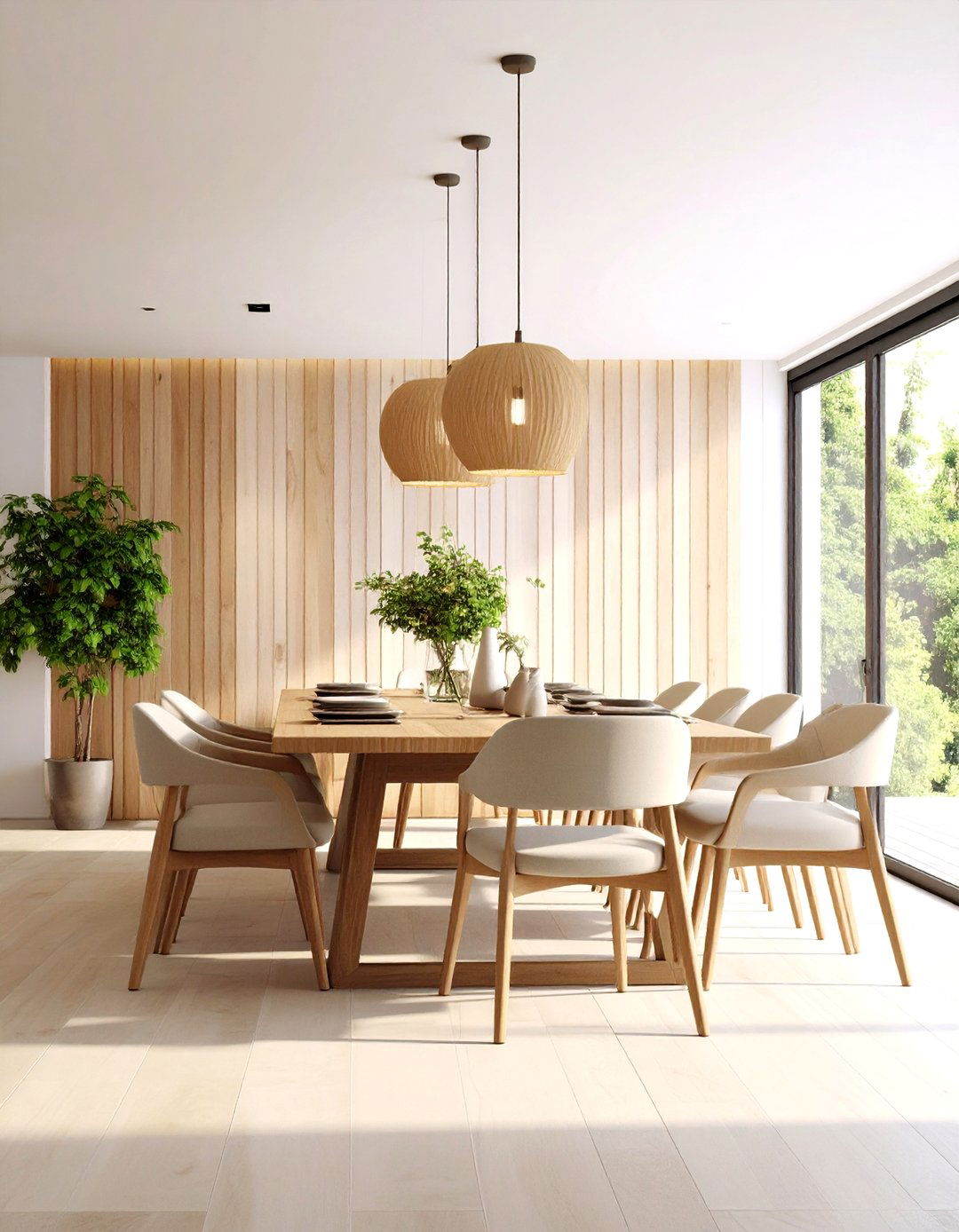
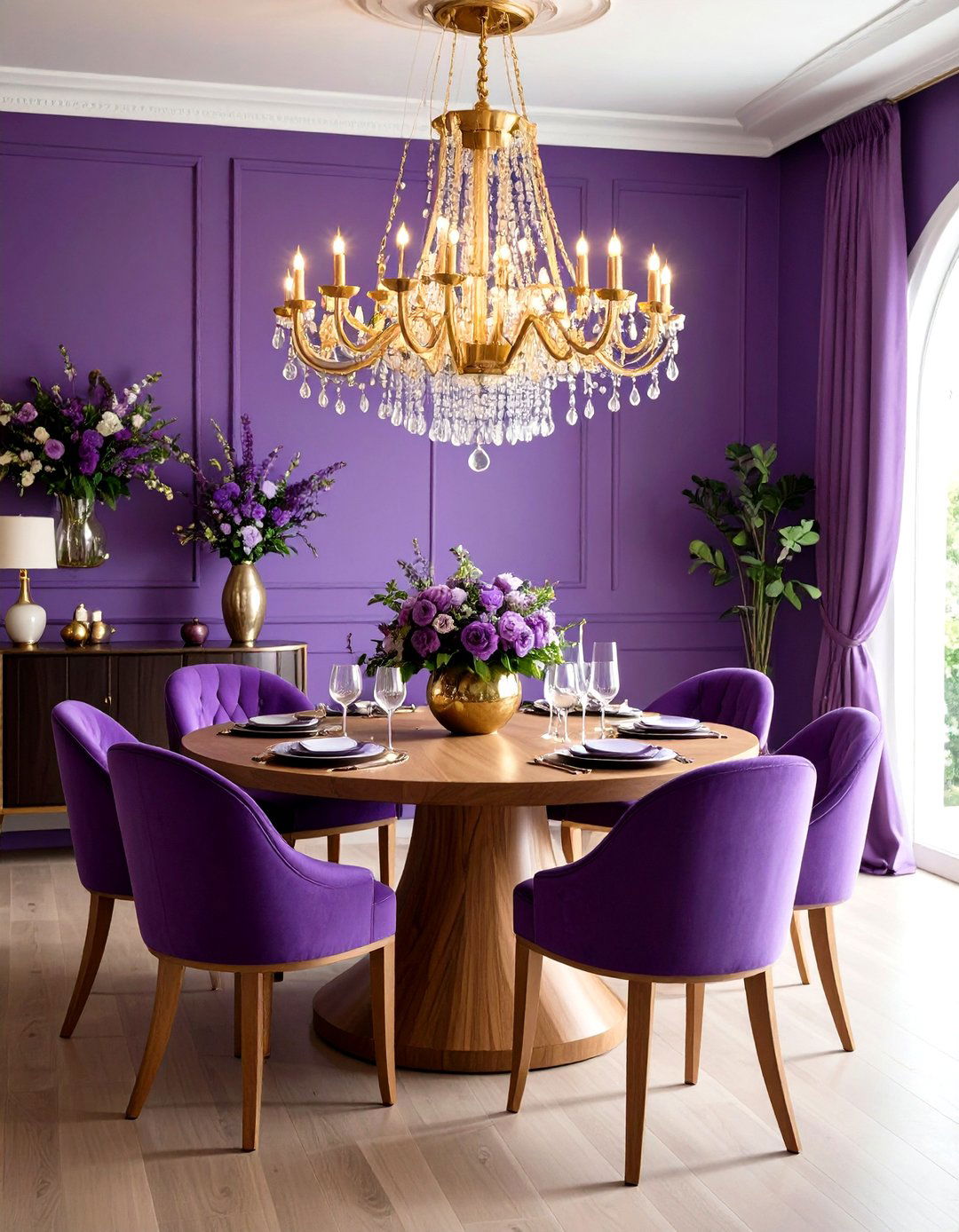

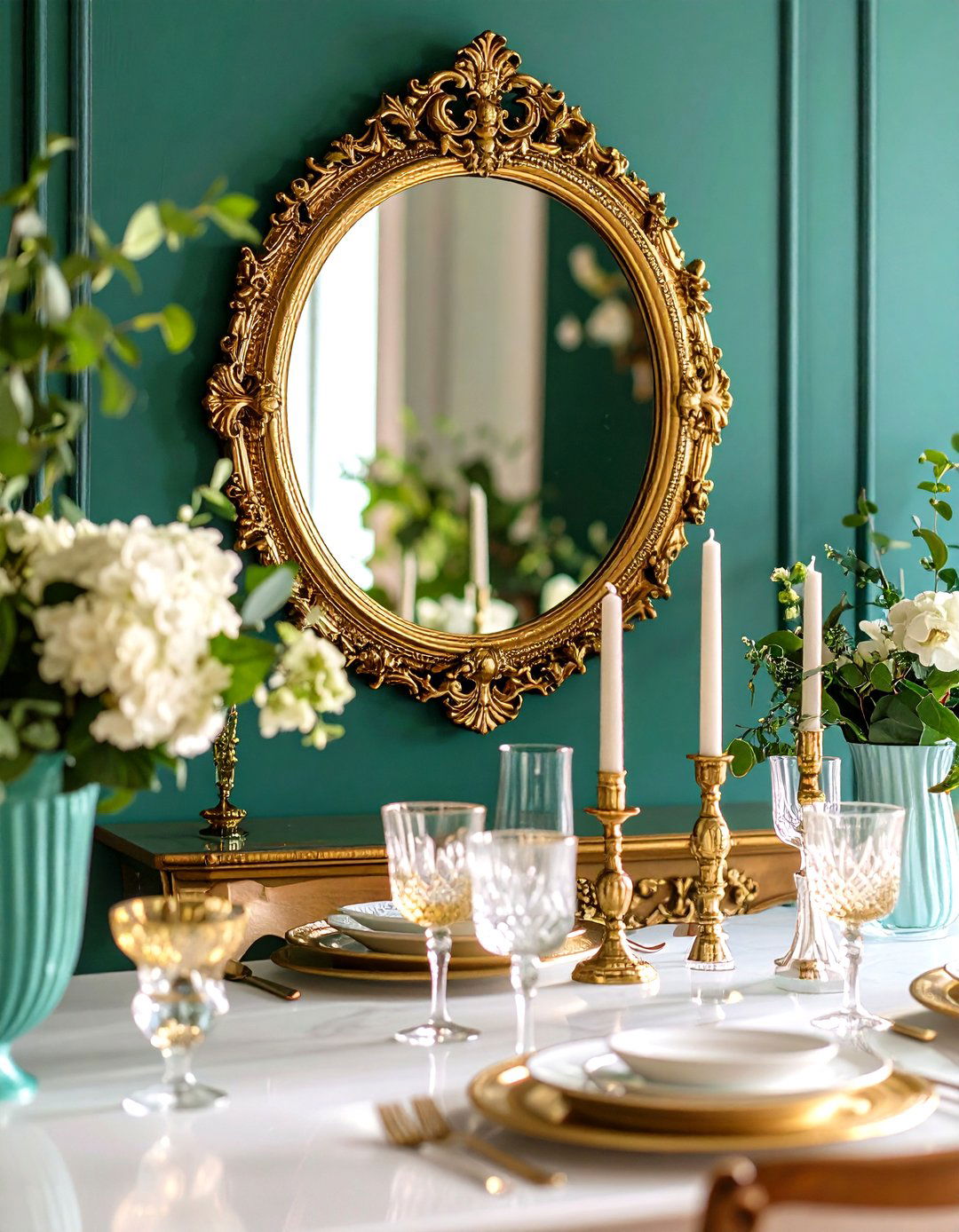
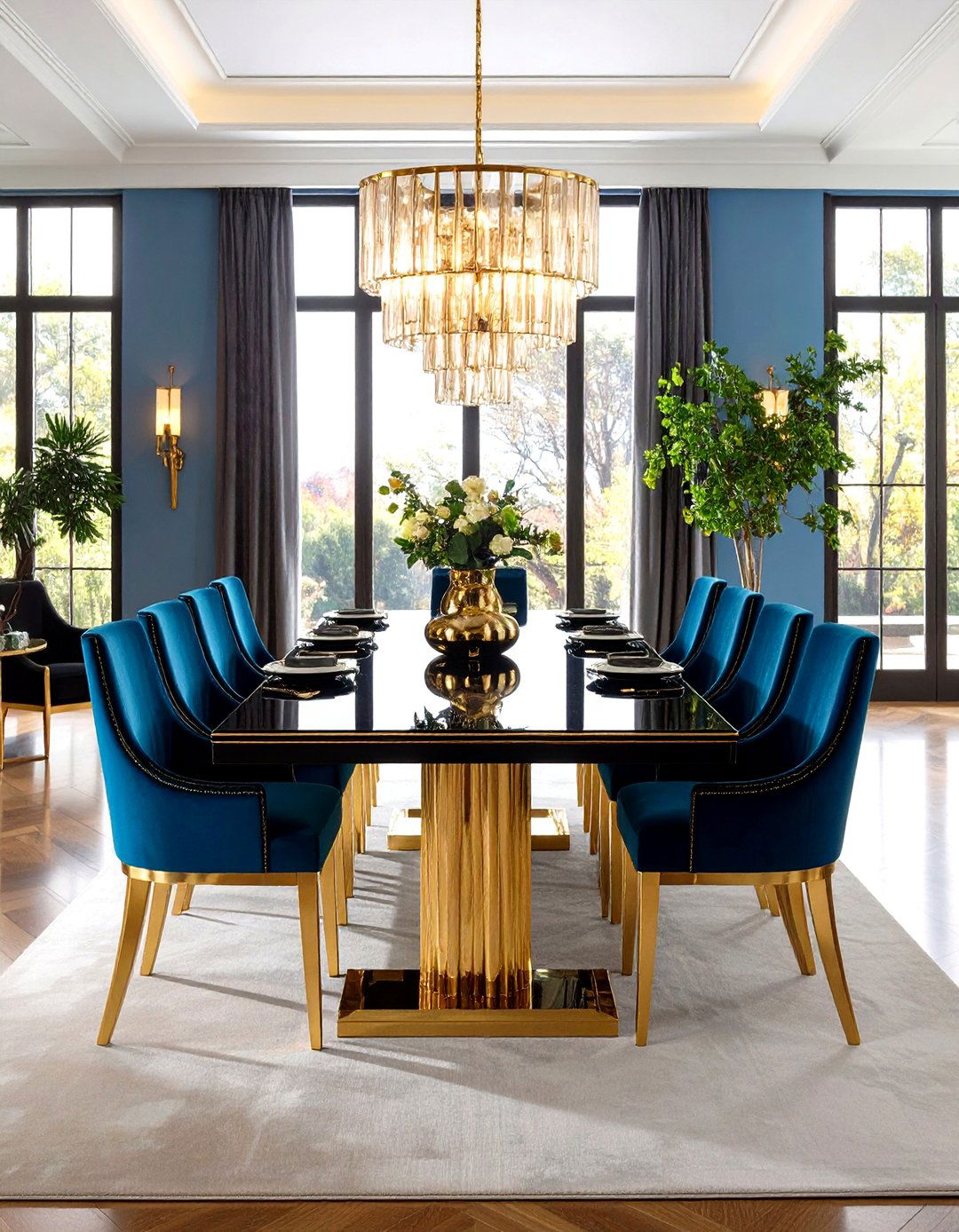
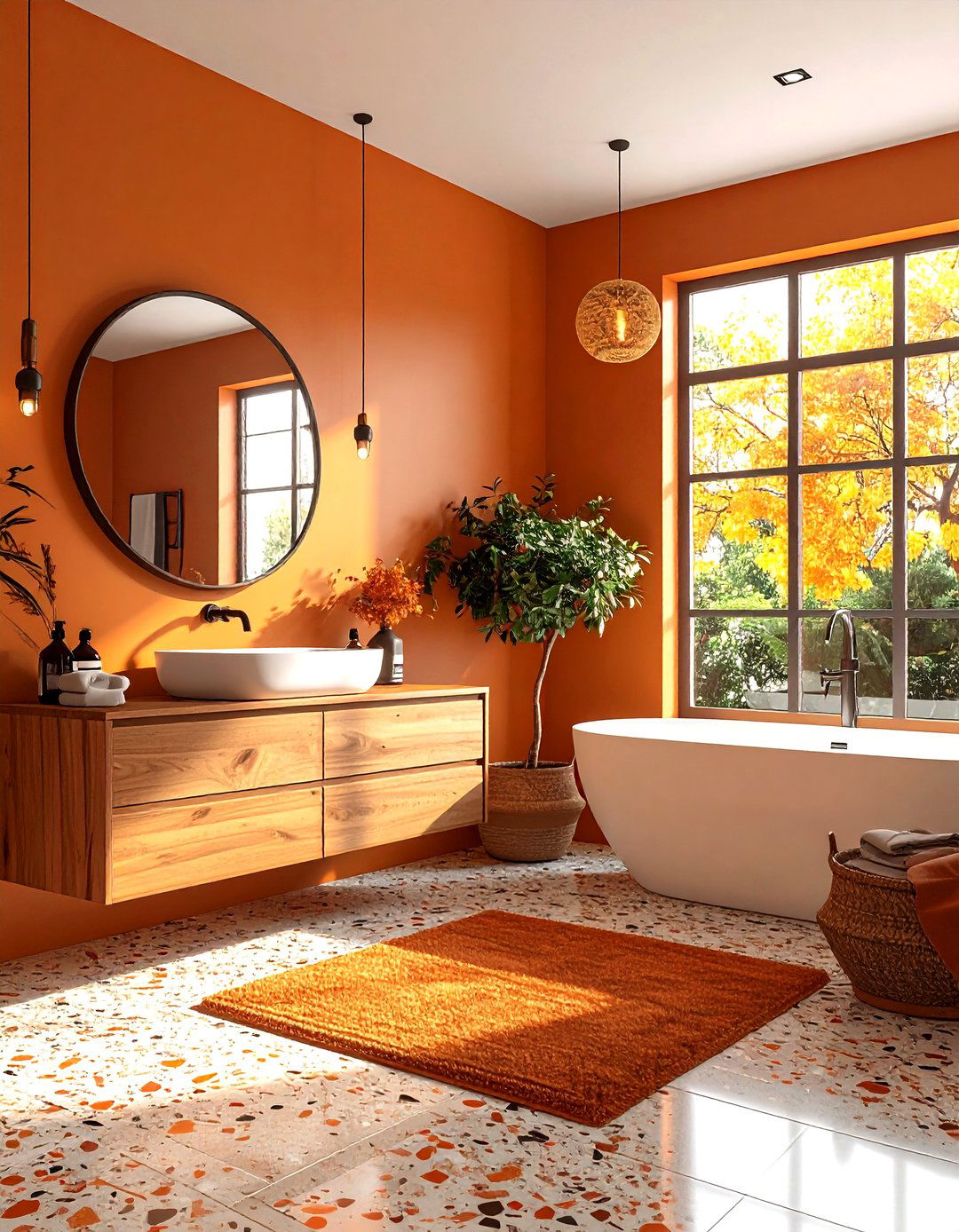
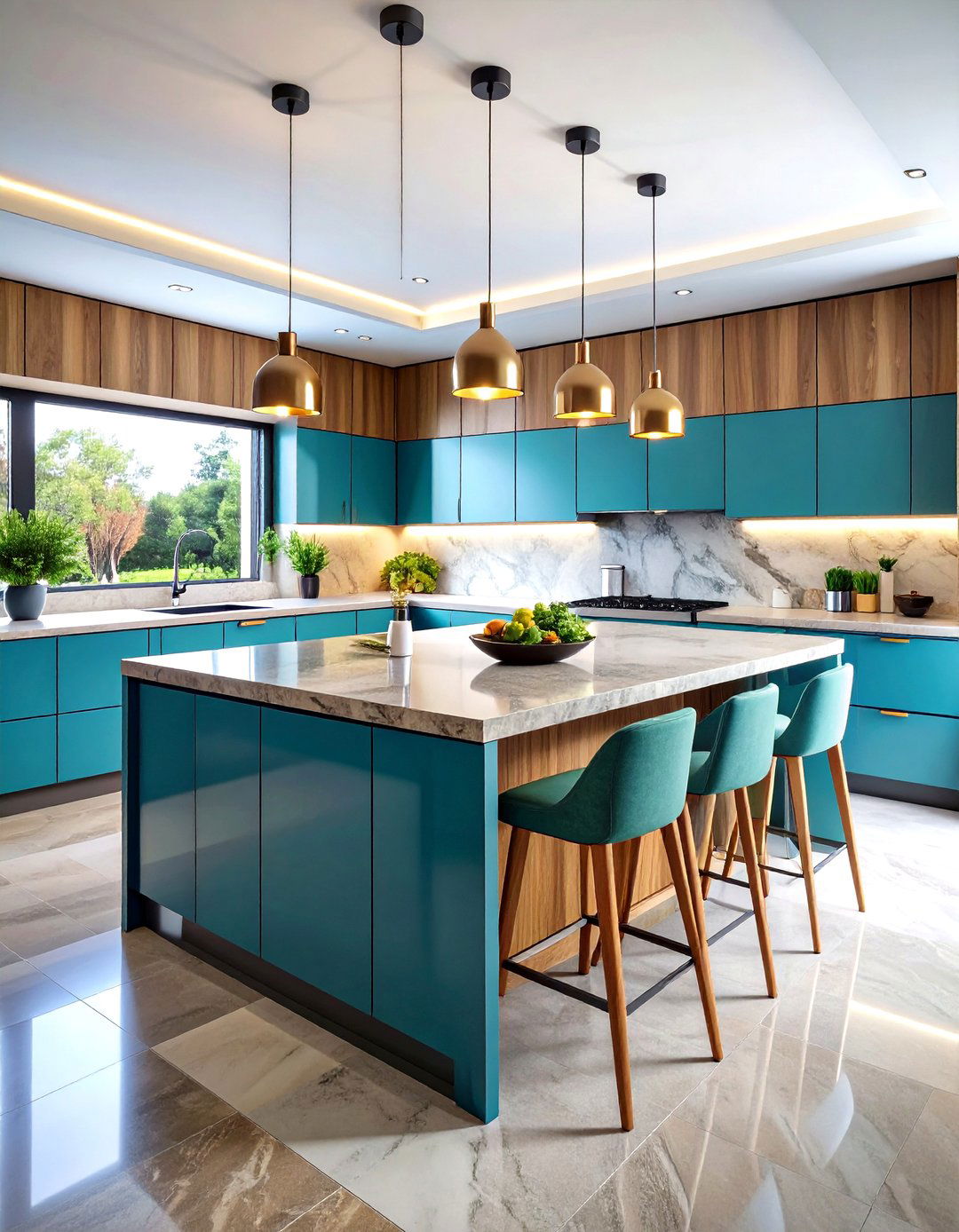
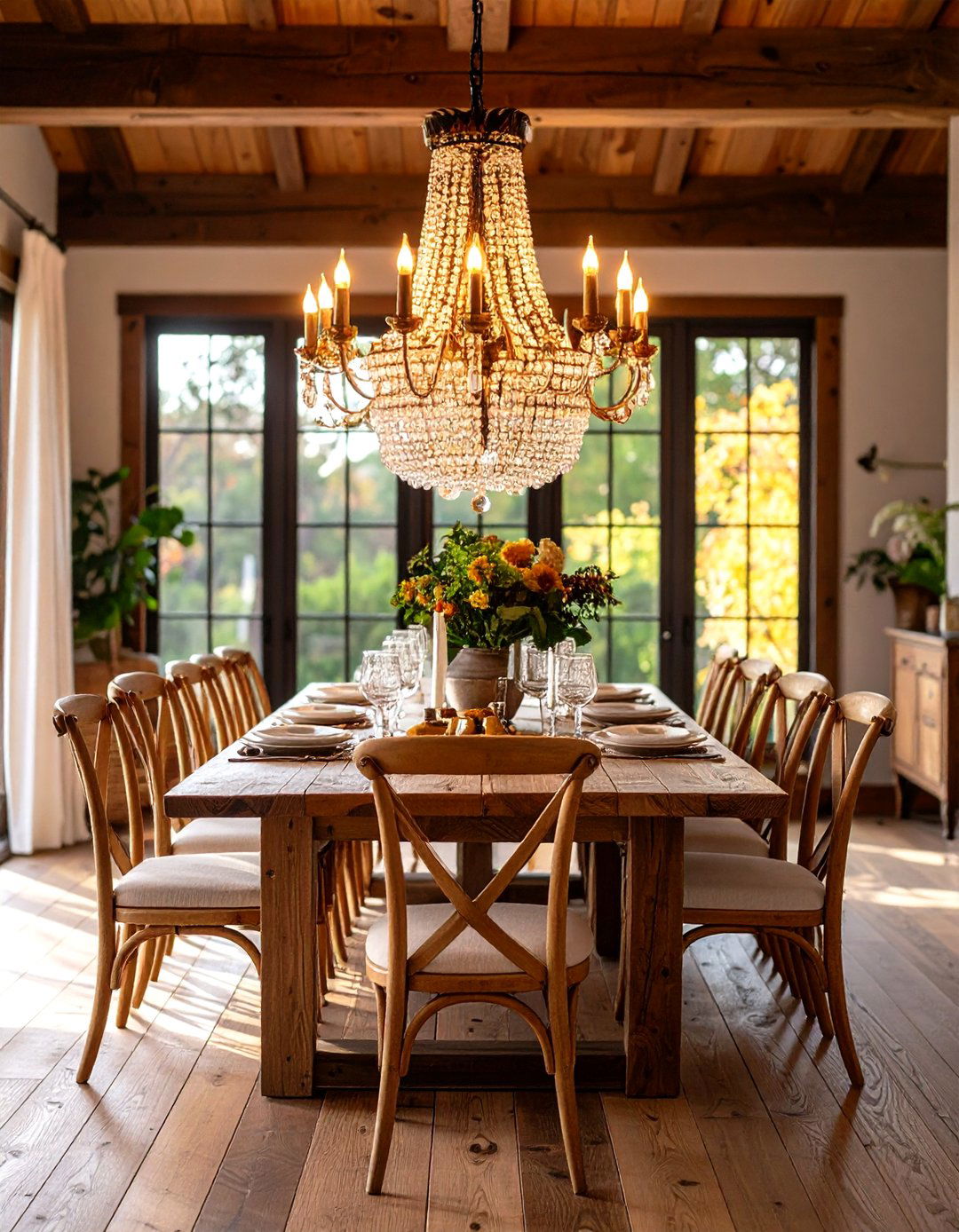
Leave a Reply